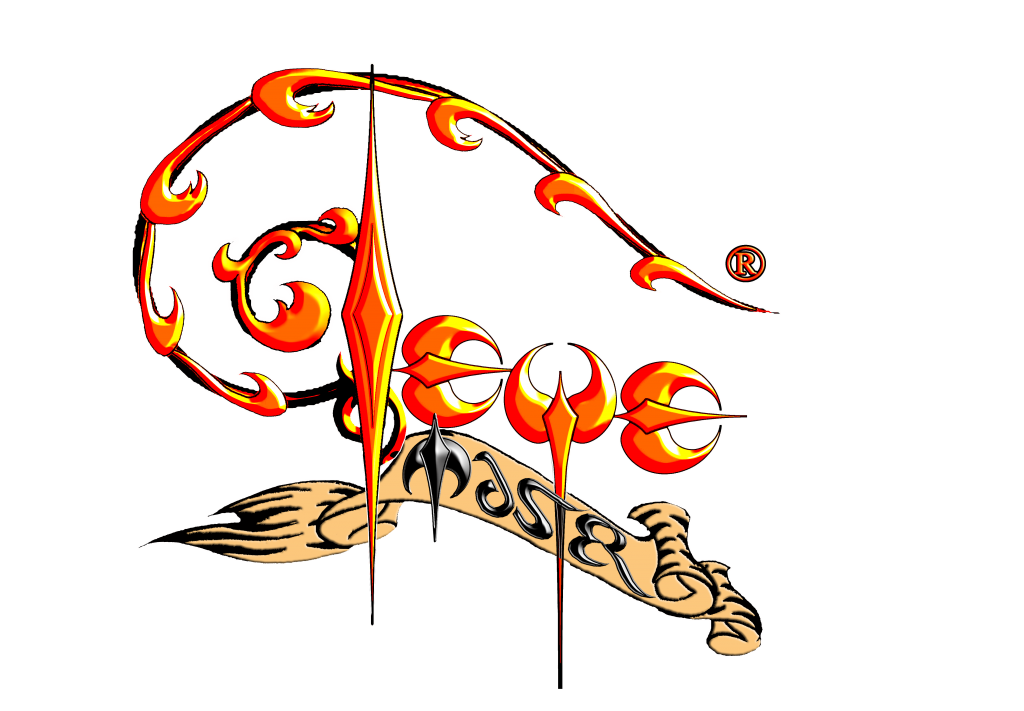
(for those who are interested)
Reader, be forewarned: this is a long page, with unedited stories about my past as a budding flamenco guitarist, but also of my encounters with the great guitar makers Manuel Reyes, Tony Zemaitis, Les Paul, Gerundino Fernandez, Lester Devoe, Ted Newman, and Paul Reed Smith, and working with luminaries like the gypsies from Cordoba, Dwight Yoakam, Joe Ely, Bruce Springsteen, and the BINTANGS. Do not start your reading when you still have to do the dishes (proceed at your own peril)
Reminiscing, or ‘lifting the skirt’
A few years back, friend and flamenco singer El Güeñi invited me for a very special glass of wine, in the Mesón “La Bulería” that is run by his family. The wine, from a private vineyard in Montilla where only friends of the winery can buy, and each customer’s quota is according to the total harvest (for example this year such-and-such family can buy six bottles, to not disappoint the other friends and families). The wine was …incredible: liquid gold, it was impossible to drink anything else after that glass.
What was also incredible was that El Güeñi started “lifting up the skirt of the memories” as “reminiscing” in Andalucía is called. And where I always had assumed that the events during all those summers, and then years I spent in Andalucía were of paramount importance in MY life but mere specks in the life of all those talented people that I hung out with, nothing could be further from the truth, I found out that evening.
Güeñi sat down and started a long “Remember when…” conversation. I’d never seen him do this; on occasions he even would be stand-offish with me. But not so tonight. And you know what? He remembered many things that I myself completely had forgotten (and my memory I thought was photographic).
Like the time when I chartered a cab
to take my girlfriend, a friend from Philadelphia (about whom more in a sec)
and myself to an all-night flamenco festival a four-hour-drive into the Sierra
Morena where El Lebrijano performed with Paco Cepero on guitar, and where “Los
Gitanos de Córdoba” (as the Plantón brothers were called: El Güeñi, El Calli,
El Cheri, El Mori) were also represented, with my friend Paco Serrano on the
guitar, and his sister Luisa dancing. The taxi left us there, stuck, and we
would try and bus it back which would cost us most of the next day, if rumours
could be believed.
After their performance, which was pretty much at the very end of the night,
the family Serrano made space for …all three of us in their car, even if it
meant that now two girls had to sit on somebody’s lap, that long and dangerous
winding road-under-construction back. Young Paco drove like a champ, with the
typical flair of the Spanish male, but oh-so-careful which I could tell by the
way his conversation would stall when he came face to face with the dangerous
curves. It was a magical sun-up over Córdoba; our heads still spinning from the
music, the drive, the company… And Güeñi, who also rode in the Serrano’s car,
remembered this?
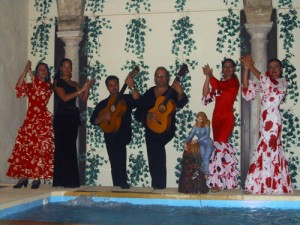
(this
is when Güeñi let us take some promo pics behind the Mesón La Buleria.)
(l to r: Belén; Reme; Juan; Teye; Fani; Ana: our big flamenco ensemble of the
2003 and 04 tours)
Or
the other time, when I was in Spain to have my Manuel Contreras guitar repaired
– he promised on the phone to do so free of charge, so I hopped on a bus and
rode the 20-hours south; dropped the guitar in his Madrid workshop and rapidly
continued on to Córdoba, to my friends, and the Flamenco. It was in January,
and I was the only foreigner there. The Gypsies had all “ordered” Dutch cheese
(“!Traeme un queso Holandés!”) and I, forever short-changed and travelling
light – other than two guitars of course, had bought a bag of baby-Goudas which
I passed among the very …surprised (not to say disappointed) Gypsies, now
laughing stock, with their miniature cheeses.
Nevertheless, when a rich Señorito from
Madrid hired El Pele and Los Gitanos de Córdoba, I immediately was invited to
come. One evening, we went to “El Rincón del Cante”, a tablao close to Medina-al-Azahara, a Moorish
palace-ruin-now-restored, about a half-hour outside Córdoba, and the happening
could begin. Strange, no one had bothered to bring a guitar, so we “used” the
house instrument, a severely beat-up demonstration of mediocrisy. A capo,
or cejilla, was missing and that is an indispensable tool in the
accompaniment of flamenco singing for with it the guitarist accomodates the
tonality of the guitar to the singer’s register. Ataranta will not sound like a taranta unless played in the key of F# with top two or three
strings ringing open, so there is no substitute: without capo, no show.
I was carrying the two necessary ingredients: a thick rubber band as used by
the Dutch Postal system and which I always picked up from the street and
stuffed in my coat pockets; and a tall pointed Moorish Gypsy knife (“navaja”). A chip of wood was found quickly, and with the big
aggressive-looking knife I festooned a cejilla onto
the guitar, with which El Pele proceeded to accompany himself since all
guitarists had chickened out of the honor (me first!). The manoever with the
big Gypsy knife had earned me much approval and I was not about to undo that by
slipping up behind such a great singer!
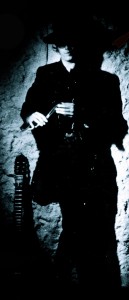
El Pele sang, and accompanied himself. He sang of pain, and suffering. He launched into a Siguiryias that seemed to last forever, and that left us all crying, literally. El Pele is a master of emotional singing, and I must say I have never seen him in such fantastic form as that evening, among 20 or so friends, plus the Señorito from Madrid, plus the guirifrom the Netherlands with the Gypsy heart.
After this tour-de-force, he put down the guitar, and soup was brought in, the famous Potaje Andaluz, and since there weren’t enough plates, we shared, and I shared with El Pele, who almost won but not quite! Much laughter has been shedded later over the fact that I beat El Pele at his own game of slurping the soup!
El Güeñi relished in telling this story as much as I do over writing it down here. What a privilege to have lived the tail end of this form of flamenco, before the deafening sound systems and the pollution by more commercial and Western-approved endless rumbas.
I will add more stories when time and memory allows.
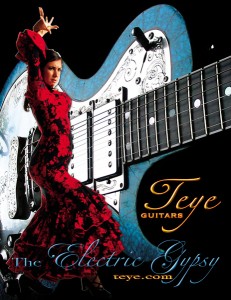
(my
wife and soulmate – flamenco dancer – rock drummer – Belén. Who is the REAL
Electric Gypsy?)
———————
Manuel Reyes, constructór de guitarras
The workshop of Manuel Reyes is perhaps the tiniest and most unassuming shop I have ever been to, yet he makes the finest flamenco guitars in the world. Like my good friend Juan Muñóz used to say: “The verdict was still out between Manolo, and this guy everybody called Marmolejos, cause he lives in Marmolejos, but I think everybody now agrees: it is Manolo who makes the best.”
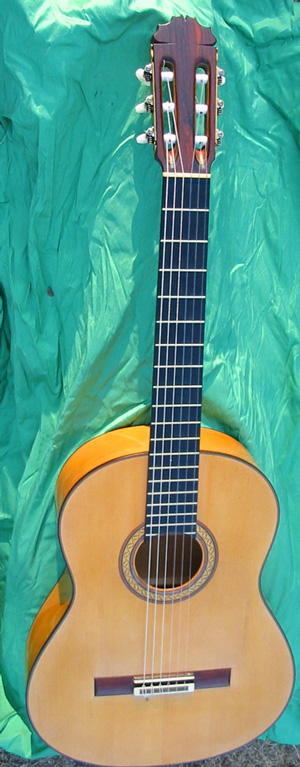
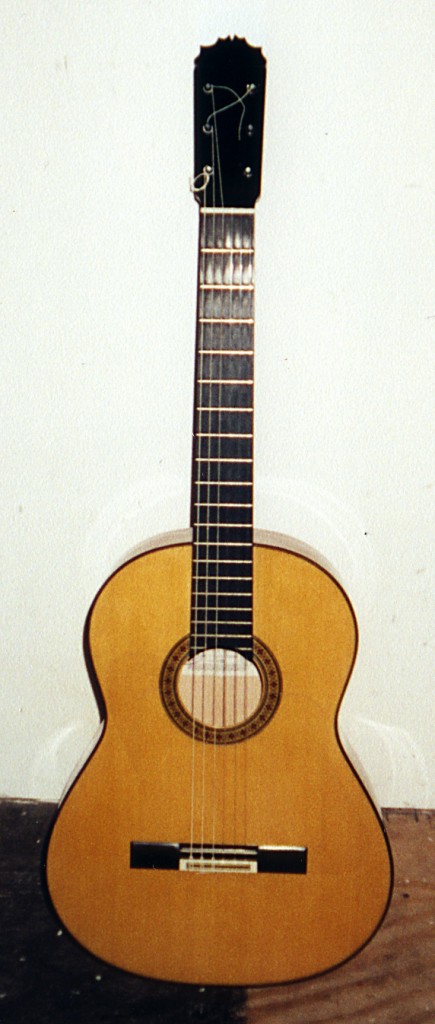
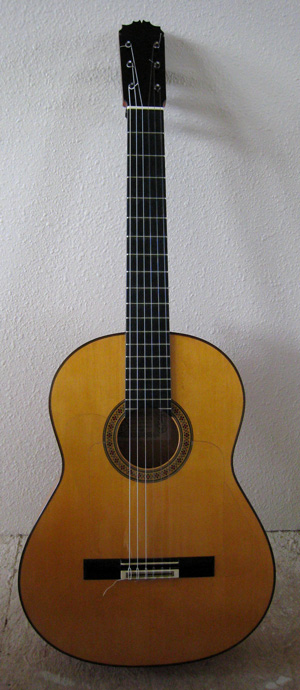
(my
1989; 1993; and 1998 Manolo Reyes guitars)
The
workshop is sandwiched in between a renovated apartment building, and the
entrance slope to a private underground garage, with a small footpath to the
square of the church of San Francisco, where El Güeñi, backed by Juan on
guitar, sang the alboreá for
El Cheri’s wedding, back in the heady days of the mid-eighties, when this whole
Córdoba flamenco scene started this most lively and inspired period. Across the
street is an old house where El Calli once brought me to play electric guitar
for them, but that is yet another story.
OK, go to the Plaza del Potro, and put your back to the river. You are now
facing the fountain, where Manolo el Platero and his friends and I used to
party, and right behind it the house that belonged (belongs?) to Paco Peña. Now
the house has an apartment building next to it, but in those days there was
just the patio of Paco
Peña where the seminar-students used to hang, and where we performed with my
rock band Cleopatra & the Shakin’ Sphinxes, for Paco and his family plus
esteemed guests – classical guitarist John Williams was rocking out in the
corner I kid you not – plus the entire seminar-congregation of that year. 1985,
a good year.
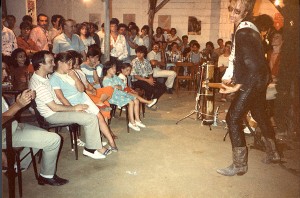
(performing
with Cleopatra & the Shakin’ Sphinxes in Paco’s patio. Paco’s the one with
the white shoes, his sister sits behind him, his brother stands, and his
daugthers are both in the picture)
Good.
Walk away from the river, and pass the house I just described: there is a
walkway to the left. Now you walk past Manolo Reyes’ old workshop! Turn right,
down the narrow alleyway. To your left is the house that used to belong to
Paco’s mother. Almost immediately the alley takes a sharp turn to the left.
This is Calle Armas, and you are now walking on top of the million footsteps
that I have there. Number 12 is the house where my friend and flamenco-connaisseur
Pepe Reina used to run his Hostal and where I used to stay, always. Then, also
to your left is that workshop!
The front door creaks when you enter: the attached bell is almost drowned out
by the squeaking. Still, a nice touch. That smell wafts you in the face
immediately: an intoxicating mix of shellac, hide glue and cypress wood, I have
considered marketing it in aerosol cans but would probably wind up buying the
whole supply myself. Sniffing glue? Forget it, this mixture is way more potent
for the true guitar aficionado!
This
is where I met Manolo Reyes, way back in 1982, I had just bought a flamenco
guitar made by Gerundino Fernandez from Almería. Why? Well those were the
guitars Paco Peña played, and mine was a bit of a special deal: it had been
used as a demo guitar for four years and I could buy her for 70,000 Pesetas
(roughly US $ 700), whereas the normal price for a maestro-made guitar,
Gerundino or Reyes, was a 100,000. Pesetas, of course, not dollars. These are
the nineteen-eighties!
So I walk in with this guitar from the competition, asking Manolo for his
opinion… Which he was gracious enough to give. Et voilà: the long-haired hippie punk from the Netherlands, and the
esteemed guitarrero from
Córdoba had begun their long friendship.
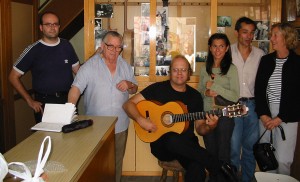
(Manolo
Jr, Manolo Sr, me demonstrating for some customers, in the front part of the
workshop, 2002)
Tell you what, walk with me into Manolo’s workshop, where Manolo Senior still made his guitars (the Maestro has since gone to a better place…) his son Manolo Junior makes his, and his daughter Manolí is learning how to make hers. When we enter, the following will take place: Manolo Jr. will come to see who just entered the shop, a broad smile will take possession of his face, and he will call to the rear: “Papa, look who is here, it’s Teye!”
Manolo Sr. will then lay down his tools, come to greet me, “Hombre, Teye!” and will take me for a drink immediately. We will go either to Sociedad Plateros (the establishment where I gave the baby Goudas to the Gypsies, and the place where I first heard Paco Serrano play), or when they have their annual holiday “for a rest for the employees” as it says on the door (“Ha! They mean for a rest for the customers”, says Manolo Sr.), then we go to the Plaza de la Corredera, to the bar of Juans’ friend Manolo (different Manolo), where I, one drunken night, interwove a Stonesy Sympathy for the devil with the alegrías just to annoy some hard-core purists, and to put a smile on Juan’s face. In Andalucía, the bars are always but a short walk away, which is good when the thermometer indicates a 125 degrees Fahrenheit (52 Celcius) in the shade.
Manolo never wants to talk guitars, except for those late night occasions when I would step into his workshop, seeing that the light was still on. Then he would share information freely. Little did we know at the time that his info would be crucial to the design of my own line of guitars, years later…
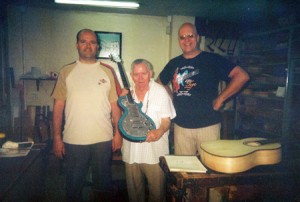
(Manolo
Jr, and Manolo Sr. in the workshop, holding the EG, 2007)
One night, I walked in and Manolo was sifting thru some tops that he had glued together, and that were awaiting further massaging, or possibly rejection, as I soon was to learn. Meanwhile we conversed, Manolo would take a top, remove the excess glue, and tap on it. I really didn’t pay that much attention until all of a sudden he put a top in a different spot from all the others. “What’s the Matter Manolo? Why do you separate that one out?” Manolo said nothing, just tapped on the top. It sounded like a plank. Then he prepared the next top and let me listen: doing doing doing. “Now THAT’s a TOP”, he said with satisfaction, putting it on the taller pile. “What’s gonna happen to the other one?” I asked. “Oh, that one will become a pretty decent top on a guitar from one of thefactories in Valencia”, Manolo said, sarcasm dripping from the words.
Years later: I translate the words: “plank”, “factories”, and decide I do NOT want to go that way. Thank you Manolo, for this glimpse in your kitchen.
More later.
————————————–
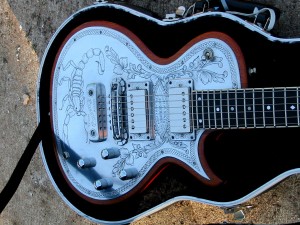
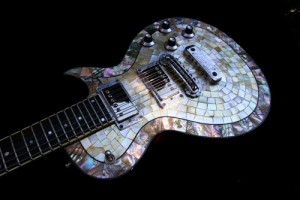
Tony Zemaitis.
Remember those incredible guitars
that Keith Richard and Ron Wood wielded? I recall picking up a Rolling Stone
magazine in 1975, with a report of the Stones “Mach 3” (as Keith likes to call
them), and pics of Keith and Ronnie, holding what seemed to be guitars from
another day and age. So beautiful, so distinguished. What were they?
Enter the oft-misspelled and mispronounced name Zemaitis. Finally, finally, in
these pre-internet days, some information started to trickle down in books and
magazines. Surely guitars only for the very rich and famous, no?
Until, many years later, I picked up a copy of an English guitar mag, simply
called GUITAR, and they ran an article on Gilby Clark’s new Z Pearl Top, with
Tony’s phone number listed at the bottom of the article.
Shall I? Dare I? With sweaty palms I called and got Mr. Zemaitis on the line. We talked about how much I had always revered his instruments, and closed a deal on a Pearl Front. Nearby friends fainted at the price negotiated… I sent in my deposit (pre-PayPal: I just sent an International Money Order) and started fantasizing. Would the guitar be anywhere near as good as my 1957 Les Paul Goldtop? Of course not! But hopefully she would at least be marvelous. A correspondence started between Tony and I, and I cherish his letters as of this day. His letters started out with complaints and price increases, since mine started out with demands (24 frets, more inlay, and the like). I supplied my own pick-ups: the recently re-released Gibson PAF-humbuckers that I had shipped in to the Netherlands from Texas, and then on to the UK: Tony quite loved them.
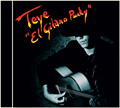
Our correspondence became quite
personal and friendly after I sent him one of my “El Gitano Punky” solo
flamenco guitar CD’s and the non-stress announcement that I really didn’t care
how long it would take him to make me the guitar (now I understand why!)
Tony sent me advice when I broke up with my long-time girlfriend; when I
started recording in Texas with Joe Ely; and when I emigrated to Spain, and
then the USA.
Tony also refused my invitations for him to come see our shows in London,
saying “Do not be offended Teye, I also turn down backstage invitations from
the Rolling Stones!”
And the late Tony (and I am positive of this) looked over my shoulder when I
started making my own guitars.
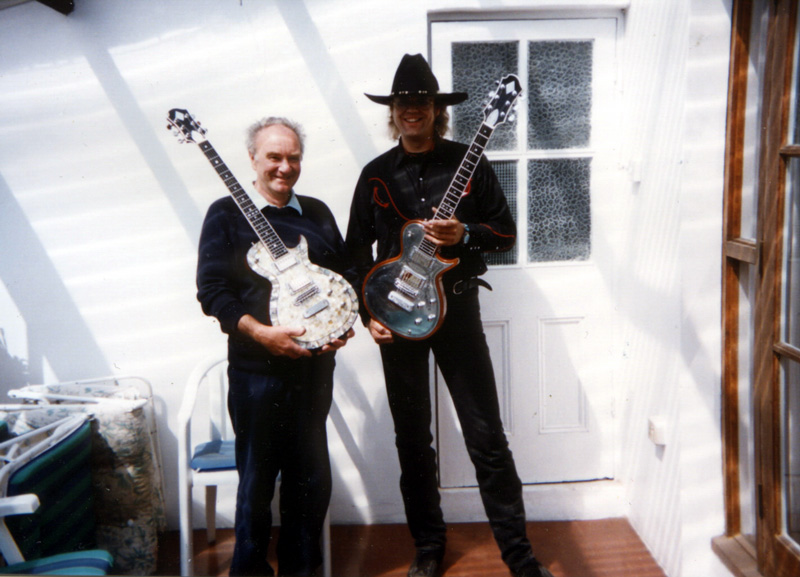
(Tony
and Teye standing right in front of the entrance to Tony’s home workshop. Tony
is holding my 1993 Pearl Top, and I am smiling broadly over my spanking new
1994 Metal Top)
With my good friend Martinus I
climbed into the Red Baron (my Coca-Cola-red and chromed-out Mercedes station
wagon) and headed off to Good Ol’ England. We took the Hovercraft, marvel of
modern technique, and blasted across the Channel, much like the German
Messerschmidts in WWII but definitely with nobler intentions: the only violence
we intended to make was the decibel-havoc we habitually unleashed on
spectators’ ears.
Some uncomfortable driving on the left; a few stops at banks to round up the
remainder of the needed funds (NOT in the Bonnie/Clyde style, but just cashing
travellers’ checks) and some ambivalous directions later, I pulled into the
driveway of Mansion “The Myrtles”, a beautiful English house in the town of
Chatham. Moments later, Tony’s wife Ann showed us into the living room where,
propped up in a very comfortable very English armchair, stood my… Tony Zemaitis
guitar.
With a way too big neck.
Tony had asked me to include measurements of my favorite guitars (which were all Gibsons and the like) so he could match the neck to my preferences. Well he didn’t, and I remember my first thought being: “Where do I go to get THIS fixed?”
Well one power chord later I was no longer thinking this, instead I wondered how I had been able to get music out of all those “other” guitars all these years… Tony’s vision was perfect (“I thought I’d make the neck a little wider, you being a classical player and all that”) and I fell in love with the guitar right away, just on the basis of playing her acoustic, and then thru the little Bigmouth amps that Martinus and I developed and made.
Tony then showed us his shop: small, unassuming (again!), and quite different from Manuel Reyes’. Lots of photos of Rock’s luminaries… He explained the merits of a large headstock (completely contrary to the vision of PRS, David Grissom and Ted McCarthy, but just as valid!), showed us some more details of the innards of a Z, we had a cuppa, and then it was time to pay, and take the booty! We also presented him with a specially-for-Tony Bigmouth amp, with a real Abalone name-plate!
I had brought especially for the occasion my brand new SKB attaché case. You know how these come with the little squares punch-out foam? Well I had just removed the very top layer; had neatly put the Pound Sterling notes as if there were stacks and stacks more underneath (ha! Foam rubber was all there was underneath), and had painted in white stencil letters “The Money” on the front of the case.
Which I opened B-Movie-Style: click, click go the locks, I open the lid, and then swing the case around for the dealer to take a look at.
Tony started to laugh. “Wait, I
didn’t ask you for THAT much!”
Anyway, we parted good friends, my friend and I continued to London where the Z
was an instant sensation, we met with some highly interesting celebrities from
the 1960′s, and continued North, all the way to Scotland, Strathy Point,
Ullapool, Loch Ness and the like, before heading home to the Netherlands.
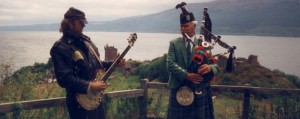
Oh and the Pearl Top, how good was she really? She was so unexpectedly great, after playing her for a night and A/B’ing her with the famed Gold Top, I put four Gibsons (yes the Gold Top too), a Gretsch, a Vox teardrop, and two Fender blackface amps up for sale and called Tony for another Z. Which I got from him the year after.
And that is another story.
——————
Purest of the pure: Morón de la Frontera
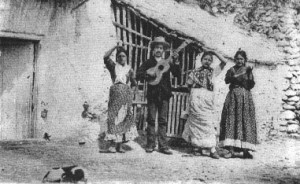
Picture this: the tall blond longhaired Viking, accompanied by his tall blonde lady, just having arrived after a hot and long bus ride from Sevilla in legendary flamenco-hotbed-of-yore Morón de la Frontera (Diego del Gastor, the Robert Johnson of the flamenco guitar lived, drank, and played there, and the American Don Pohren made his flamenco center there, the famous Finca where many a Northamerican fell in love with the art form and studied then with Diego). They’ve just witnessed the tell-tale sign behind the bar of the once-teeming-with-flamenco-impromptu establishment-of-drinks that reads loudly: Forbidden the Flamenco Song! And venture out onto the town square. Forbidden the Flamenco song? Hah! What are we to do then, disco dance?
So my girlfriend and I walk onto the town square, where from the corner of my eyes I spy a group of oh-so-bored Gypsies sitting on the church steps and hoping for entertainment, or income, or both. The lady walks in the shade where the temperature is rising quickly to the hundredandtwenties (50, in metric), I however, visibly flaunting my new white guitar case with inspired drawings, stay in the sun, the proverbial foolish guiri, looking to be exploited.
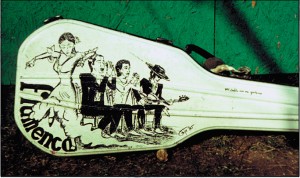
The expected hissing (to draw attention) does not keep me waiting. Extremely surprised I look up. Who, me? The Gypsies motion me over and soon the conversation goes like this: “What guitar you carry, stranger?” “A Flamenco guitar you say?” “You know how to play it then?” “Let’s have a listen”.

Now the trick, at least in those days was, to carry a very good guitar, and I whipped out my Gerundino Fernandez and started off into I don’t remember which style, luring these dark-haired chaps into my carefully prepared trap. “Nice, nice, you play well, but… how about a little por bulerías (wink wink)?” Surely the guiri will be lost immediately in this most difficult and complex of Gypsy rhythms. But no, the guiri had learned the bulerías – not the stiff one, from the books and tapes, but the real one – from his Gypsy friends in Córdoba, and didn’t do too shabby!
I played modern stuff, Paco de Lucía and the like, and that was to be expected from a guiri, right? But then I drew open the closet a tad more, and dove into some old-style falsetas, leaving the Gypsies puzzled, and even inspired. Hands were joined in an excitingcontratiempo, and then I closed the trap, for who would have expected that the blond guiri with blond female and white plastic and modern guitar case would be intimately familiar with the falsetas of Diego del Gastor…?!?!? Falseta after falseta, the ones I’d learned from watching Manuel de Palma (guitarist then of the incredible El Pele, and protégé of Diego while the latter was still alive) and that I adore to this day. Quickly, word was sent out and quickly also I was confronted with Antonio and Nicolás, the Gypsy princes of that moment. Play it again, so I did
The
afternoon got underway proper. Siesta? All but forgotten. We picked up supplies
on the market and retreated to a nearbyventa, as luck would
have it the venta close to
Pohren’s old place, which was already in the hands of some rich people and
therefore closed off to our spontaneous creativity as these things go. So in
the nearby venta’s patio, in
a shaded circle, we settled down and my “carry a good guitar”-trick started to
work. For she went from lap to lap, one player more eager than the last to make
this beauty sing, and sting, as is the way of flamenco. And here I sat, free
lessons aplenty, drink, new friendships, and the day still young.
That night we all went to the famous festival of “Potaje Andalúz” (where I ran
into guitarist Mario Escudero, fresh off the stage, whom I knew from when we
both stayed at Pepe’s private hotel in Córdoba: he was quite surprised to see
me there) and Antonio presented me to his novia, a young raven-haired Gypsy beauty with flaming black eyes
which she prudely cast down, while Antonio sang about the necessity of keeping
the Gypsy bloodline pure.
Sing some more he did once we
relocated, after the festival, and courtesy of a cab driver (who had vainly
fancied a quick tumble with the blond woman) to the top of the hill, by the
side of the old Moorish castle, where Antonio and Nicolas traded playing and
singing roles and I eagerly supplied my great guitar for this, until the sun
rose blood-red over the town of the rooster.
Finally they left us on the mirador (the panorama) where we waited for the
first bus back.
I saw Antonio and Nicolas again the year after, but under completely different circumstances, lessons had to be learned, a naïveguiri counts on the already taken path and gets quite a different one instead.
But that, yes, is another story.
————————–
My flamenco debut in Córdoba
Like yesterday, it all feels. Mesón “La Bulería”, in the calle Pedro Lopez in Córdoba: the patriarch of the Gypsy family of Los Plantóns, father of my friends El Güeñi, El Calli, El Mori and El Cheri, and grandfather of my great friend and soulmate Juan Muñóz, has won the lottery, twice! And bought this enormous ancient palace in the middle of Córdoba, then converted it into a flamenco tablao. I once saw Güeñi park his car in the garage of that place: a completely colorfully tiled former utility room, upon which I expressed my desire to reincarnate as a car and then live there. Absolutely beautiful, with all upstairs rooms giving onto a walkway around the central patio (where the music takes place) so that the family can check on artists and audience without even coming down; and several more patios to the rear, one of which equipped with a big swimming pool, and all this in prime real estate location, right between Plaza de la Corredera and the Tendillas central square…
His
sons and grandson provide the entertainment, along with all their friends and
hangers-on. Since it is an honor to perform in the house of the Gypsies, no one
asks for pay. Anyway, the free food and drink is more than welcome in nights
that typically get underway at 9PM and continue until the sun comes up. Here is
where I hooked up with my friend Juan for real. How I met him?
Years before that, I rolled into Córdoba on a train and went in search of
flamenco, but took a stroll to the Mezquita first. Where family members of the
Plantóns whisked me into a touristy cellar, where El Güeñi and the whole gang
were performing. Their sound system was silent, and the tourists loud, so I
found them performing in total dismay.
Güeñi spotted me (6 foot 6 blond Viking, how did he …) and rushed from the
stage to greet me. Fix our equipment, was the essence of his greeting. And I
did (merely a wrong connection, but it had them puzzled for the entire night).
The show was all right, with Pepe Toques on guitar (the scar on his face is
from a Gypsy knife that he tried to protect our mutual friend Tomas Hickstein
from, and got stabbed himself instead), and Concha ‘underpants’ Calero waving
the skirt about. But afterwards things got interesting. “How can we ever thank
you?” the Plantóns asked, as a rhetorical question. But I actually answered:
“With a guitar lesson!”
So the next afternoon, El Güeñi strolls into my hotel room, in the Taberna del Potro (where Cervantes stayed when he wrote that part of his Don Quixote) accompanied by his nephew, the equally old Juan: two Gypsy princes. Güeñi does not hesitate, he grabs the guitar and asks me which falseta I want to learn. No, no falsetas, I just want to learn the compás (rhythm) of the bulería. But you know how to play the bulería compás! Yes but not like you Gypsies play it. Güeñi turns to Juan, they exchange an approving glance: this guiri has his priorities straight! And Güeñi shows me the Gypsy bulería rhythm that I use to this day.
In the Mesón La Bulería (aptly named after this most wild and favored rhythm) Juan would have me come around at 4PM or so to practise and study with him. He would play all afternoon with me, then play while walking to the dressing room; play their first set on-stage, play on the way back to the dressing room, play and show me some more stuff in the break, play on his way to the stage, well you get the picture. Then, at 4 in the morning, he would finally put his guitar down, complaining about his fingers and nails.
And after a few days of this, they would bring me on-stage with them, where I would be 3rd guitarist, behind Juan and Ramon Rodríguez, brother of Ana, then-girlfriend of Güeñi.
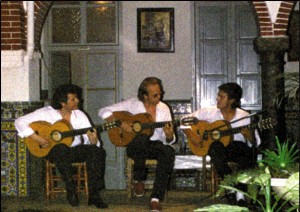
(l to r: Antonio the teacher, Teye, and Juan Muñóz-Plantón, my friend and guru)
And their setup was one of sheer genius: first of all they had many fantastic artists perform free at the Mesón. Then, when there was a festival somewhere, the best performers simply went and did the gig, while the others kept the Mesón open. Perfect.
Right up until when Ramón, second guitarist, had a traffic accident. I recall vividly how I was at the Posada del Potro for that nights’ concert, I had good tickets and was talking to Natalia, the 16 year old flamenco dancer with whom I was working in the Netherlands, when El Güeñi came looking for me, he didn’t even ask nicely: “Let me see if you understand me: you, must go, immediately, right this moment, to the Mesón. And bring your guitar.”
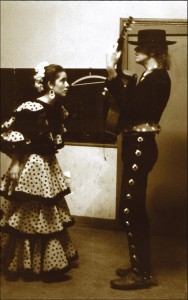
(Natalie
and I, backstage, somewhere in the Netherlands, mid-to-late 1980′s)
Bye bye tickets for the show: I went to the Mesón and found out the story: the best performers were to perform somewhere else that night, and since Ramón was in the hospital, now Teye was the sole guitarist of the Mesón tonight.
Aargh!
Anyway,
El Cheri will be here shortly to rehearse with you. So, no worries. This is
eight o’clock.
At nine fifteen, there’s El Cheri! “Teye! Have a drink, I’ll be right there!”
At 9:30, Cheri announces that he has some business to attend to, and if I don’t
want to eat something.
At 9:45, we rehearse. The soleá goes well,
this is a style I have always liked, and I follow his singing well. The fandango grandehowever never was my cuppa tea. So Cheri promises he will
only sing the three coplas that
we rehearse.
“Come on, the Mayor of Córdoba is in the audience tonight, we must not be
late!” and Cheri walks towards the stage. “But what about the bulerías?” I mumble. “Cheri says: “Te lo pido en el escenario”
(literally: I will demand it from you on stage). What to do? That is the most
difficult of rhythms!
Oh well. We walk onstage, and Cheri, a full head-and-a-half shorter than I, introduces me, as a Dutch friend of the family who always has had much affection for the flamenco blah blah blah. I stoop as low as possible, to not completely stand out, and we sit on these rickety reed chairs, considered muy flamenco, I bend the abysmal mike to my guitar, and we start: por soleá: and to be honest, things are considerably less abysmal than I feared. I play good and beautiful falsetas, and Cheri smiles, and gets into it.
Then the fandangos: As promised, Cheri sings only the rehearsed coplas, but… in a totally different tonality! Is he simply improvising as usual, or is he pulling my leg? It would not surprise me. But here I am, the Mayor is in the audience, as are all the Gypsies, who I’m sure would love for me to stumble and fall… But I don’t. Somehow my fingers follow his very different harmonics, and I am actually capable of throwing in the odd falseta. Amazing.
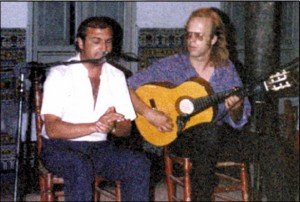
But oh-oh, now we do the bulerías. Cheri seems confident, more than I can say for myself. Nevertheless, I play an introduction by Paco Serrano, mutual friend and longtime accompanyist of the Plantón brothers, and Cheri smiles, and bursts loose in one of the more easily followed bulería-verses. I cling to him like a flea clings to a dog. He does several more in the same vein, then switches to the more modern and weird stuff. Like the dog, he cannot get rid of the flea: Juans’ many afternoon-lessons kick in and I’m with him, all the way.
Then, he tries to shake me in the ancient Gypsy tonalities, venturing out into the territory of Diego del Gastor… and I’m on him, not only that, but I also take a long series of falsetas from the correct period and region. Cheri drops his jaw: who would have thought! And his mother, and some other Gypsy women, shout a heartfelt OLE. The applause is thundering. Vaguely I remember making it back to the dressing room, and then performing a solo, and accompanying the dance of beautiful beautiful Loli. An incredible night, and from then on a respectful treatment by these proud and uncontrollable people.
——–
A good many years later, I’m in Córdoba with a friend and we stop by Mesón La Bulería in search of Juan, who isn’t there. As is customary, he’s out, performing at some festival that night, and there is another guitarist, a new hot-shot in the Córdoba-scene, that will take up the six-string duties that night.
Of course, El Cheri immediately also invites me to perform, and so we will divide up the guitar duties for that evening. Cheri announces he will do two sets, both featuring the bulería, and he and the young virtuoso launch into one, to get acquainted with each other. The guy plays terrific, but when Cheri arrives at a stop in the music, he does not get the guitar accompaniment he wants to hear. “No, no, you have to do that corte (stop) in the way of the gitanos (gypsies). Here Teye, you show him what I mean.”
…..?!?
Here I am, tall blond guiri in Andalucía, showing a fantastic local musician …the way of the gypsies…?!?! Who would have…
Thank you Güeñi, and thank you Juan!!!
—————–
Ted Newman-Jones, III
Do you remember that weird, tiny
guitar that Keith Richards used to play, on the post-Exile on Main St tours? It
was a 5-string (the first 5-string made for him; I believe the second one was
the famous skull, bones, and knife inlaid “Macabre” by Tony Zemaitis – who
reportedly referred to it as the “Childish”)
It was a weird guitar: frets not extending all the way on the board (the top
frets gone “missing”?); no cutaway but the shape a drunken sagged classical
guitar shape, weird switch plate, etc. But it sounded pretty good, we were able
to determine once the bootlegs of the Winterland benefit, and the 1973 Euro
tour came trickling in.
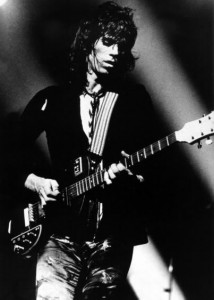
So years later, we find out that it is a guitar made by Ted Newman-Jones the IIIrd, an American who tagged on to Keith’s entourage by bringing him a Rickenbacker(?) that he’d worked on, to Keith’s house in the South of France. Keith took the young man in, and Ted so became the world’s first guitar tech, after suggesting that the Stones should have a freshly tuned guitar ready for every song (listen to the old bootlegs: eternity would pass between songs while the guitarists would turn their tuning keys). Also, Ted helped Keith select new guitars to replace the famous 11 that were stolen from his French Rivièra residence (of which I played the second Dan Armstrong – the “Altamont” guitar – , years later, when it turned up, broken, in Paris).
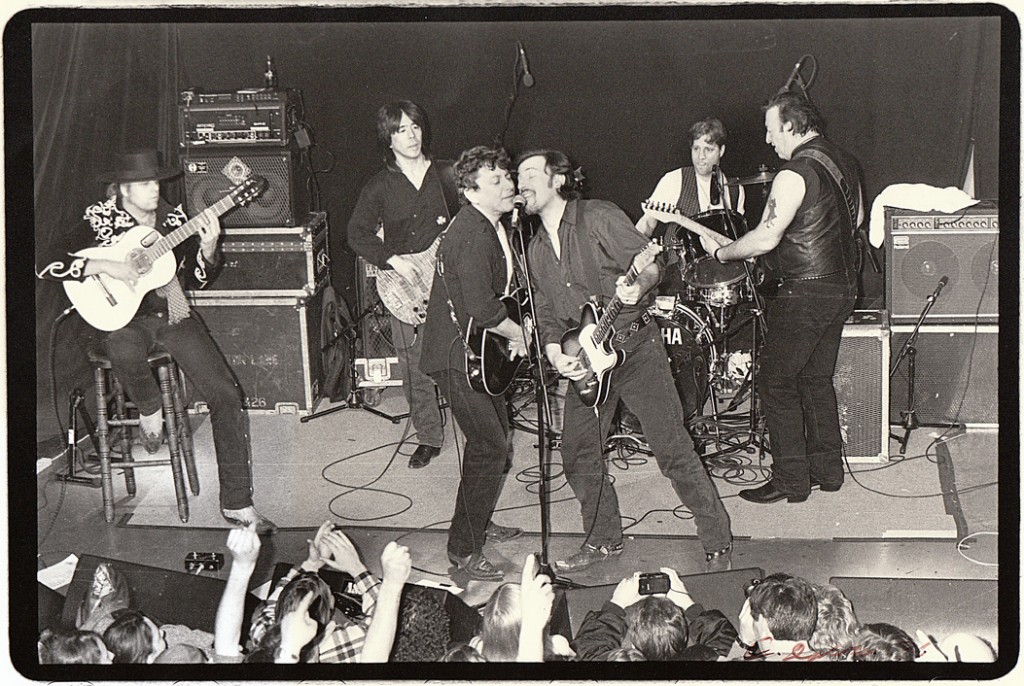
(St.
Patricks Day 1996, in The Mean Fidler, Dublin(!): l to r: Teye, Glen Fukunaga;
Joe Ely; Bruce Springsteen; Don Harvy; Jesse Taylor playing his black main
Newman guitar)
Fast-forward to 1994, when I was in Austin, Texas, place I’d LOVED since my first visit in 1985, and was recording with Joe Ely what would become his landmark album “Letter to Laredo” on which Joe successfully fused folk, rock, pedal steel, and flamenco guitar (the latter being played by me). The conversation unexpectedly turned to …guitars… and Joe told me that Ted (or Newman as everybody referred to him) lived a half-hour drive away, on South First street, behind the Mexican restaurant El Mercado, where I’d weeks before studied the Texas traffic rules in order to pass my driving test, to get my insurance rates down by no longer having only an international drivers licence. And Joe assured me, Newman would very much enjoy my visit, especially since I carried my Zemaitis Pearl Top.
Off I drove, in my Texas wheels, an ancient tan El Camino, and met Newman, who lived in semi-squalor in that most wonderful part of town. Newman, or Ted as I called him, was a true Southern gentleman! He welcomed me into his house, excused for the mess, admired the Pearly, saying he’d always been in awe of Tony’s work, and showed me some guitars in various stages of completion. He told me excitedly how he just bought a substantial quantity of very old mahogany and what great sounding guitars these planks would make.
Over the next few years, he would
come often to my solo flamenco performances in Hank’s Roadhouse, just down the
block from him, and would be very generous with his compliments. Since Ted had
been around so many great guitarists, his compliments always made me a little
nervous…
And I would visit him: on one occasion he showed me the guitar he was about to
send off to Lucinda Williams. Imagine a winter eve, in an old
house-slash-workshop (you could never really see where one stopped and the other
began), and amidst all this, Ted pulls out a case and opens it: succulent black
plush, with this absolutely stunningly gorgeous shiny guitar in it. Like a
science fiction novel where you are able to travel between worlds simply by
opening a case.
Ted also showed me a guitar he was making for himself: thin flamed Maple body, with a slanted P-90 pickup by the bridge, and a humbucker at the neck. A little rough at the edges, since it wasn’t for a customer… Years later, I was offered that very guitar by Troy Dillinger of the Del Dragons, and was able to acquire it for my good friend Siep Wip from the Netherlands, who then equipped it with two Seymour humbuckers and plays it until this day, gathering compliments on his sound everywhere.
Here’s a paragraph that to me sums
up Ted Newman-Jones III:
I spotted a child sized acoustic guitar that looked as if Ted was working on.
Now please remember, Ted built for the stars: Keef, Ronnie, Lucinda Williams,
Jesse Taylor.
Then Ted told me he was making that little guitar for a poor kid in the
neighborhood, to give it to him. “They don’t have money to buy guitars for
kids, Teye, but don’t you think those kids also deserve a chance?”
Rumor has it that Ted will, after a long absence, return to the world of guitar-building!
————————–
My Philadelphian friend
Ah! Ipromised to elaborate on “my
friend from Philadelphia” of the nineteen eighty three adventure cabbing it to
a flamenco festival three hours away from Cordoba! Strangely, I can picture him
before me this very second, can recall many anecdotes, but his name has slipped
into the more obscure folds of my mind…
Picture a lively and strong dark-curly-haired young man with an excellent sense
of humor. It was towards the end of the summer course of Paco Peña and we decided
it would be a great thing to give him a thank-you present. My Philadelphia
friend suggested we write him a song. So we did. Central theme must be the
music of course, but we also needed a link to Paco’s brag that he would not
only teach us to play, but also to drink, ha! We used the melody of Rolling
Stones’ Honky Tonk Women, and tailored the lyrics like so:
I met
a little guitar man in Cordoba
He tried to teach me how to play it right
But every time I went right out of compas (the
flamenco rhythm)
He broke down on his knees and began to cry
(chorus:)
He’s the King of Spain, the Queen of Eliz’beth Hall
Paco, Paco, Music and Alcohol
(there were more verses, but they reside right next to my friends’ name in the vast unused part of the brain)
We performed the song on Paco’s patio, at (a very liquid) lunchtime after the last class, and when we were finished Paco said: “Have a drink”.
————————–
Meeting Paul Reed Smith
‘t Was on the Dallas Guitar Show, in
2006, where I went to show the Electric Gypsy prototype to gauge reactions from
the professional world. I had taken the guitar on the spring East Coast tour
that Belen and I did only a month before, and gathered tons of incredibly
enthusiastic reactions from music store owners and players alike, but was still
very uncertain about the whole thing. So I decided to take another test before
plunging head first into a career of guitar-making: the Dallas Guitar Show,
where surely much criticism would flow my way.
Quite the contrary! Everybody was wildly enthusiastic thru the roof about my
humble creation! Several people wanted to buy her, but I needed a demo-guitar…
I of course did not have a booth, but used the time-proven method of pretending
to buy. In my old days as hitch-hiker thru France, Germany, Spain, and England,
it had always worked: of course I wasn’t going to schlepp a big guitar case on
these travels, so to keep my technique up, I would sometimes dive into a local
guitar store, in “search” of a special guitar that I’d long spotted in the shop
window. Get a (free) cup of coffee, take a chair, fire up an amp and “put the
guitar thru its’ paces”. Of course, I would end up ‘not buying her’.
Similarly, when you are at a guitar show, ‘pirating’, the best way to show your
guitar is to go ‘amp-shopping’. And please believe-you-me that in the end, the
Electric Gypsy is the item to catch the eye of the casual passer-by!
(Coincidently, this ‘pirate-demo’ thing also works really well for the seller
of the amp in question, for the Gypsy DOES make the amps shine! I know of
several people who ended up buying a specific amp after hearing it for the
first time on one of my ‘pirate’ endeavors.)
So here I am, morning of the first day, I still did not quite ‘have my story ready’, and am plugging into this amp and playing, putting the guitar thru its’ paces, or ‘showing off’. A gentleman with short, grey hair walks up and stands listening, and me, on my quest to get an e-mail list going (bytheway, did YOU subscribe already?) (on the contact page please) rattle off my little story. The gentleman asks increduaously: “Did YOU build this guitar?” Yes, I did, and how about your e-mail address? He then says: “Just write me from the web site, any email sent thru the web site gets to me in ten seconds”.
What web site, I’m about to ask, but he turns around and walks away. I catch the back of his shirt where it reads: PRS-guitars. I turn my head to the sellers of ‘my demo amp’ and shake “Noooo”, pointing at the gentlemans’ back. The amp sellers smile and nod “Yeeeeeeeesssss!”
So I follow Paul to his booth which was right next to the booth I met him. And apologize for not immediately recognizing him. He then looks at my guitar again and says, this is amazing. And then gives me the quote-of-quotes. He looks again, then slants his head up to me and says:
“You will be making MANY more guitars.”
What a GREAT encouragement from this man who single-handedly kicked the industry leaders under the testicles!
Fast-forward to the next years’ Dallas Show: we now have our own (big) booth and take my latest creation to show to Paul. He again is very supportive, shows the guitar to some people standing there, and then we ask: “Paul, we want to ask Johnny Hiland to play a song on this guitar tonight, but were wondering if you had any objections to that.” And Paul immediately burst loose in protest: “Yes I have, you guys have no idea the amount of money it costs me to bring Johnny here and I want him to promote MY guitars”. We (Evert and I) immediately say that we had thought as much and that’s why we ask him first. Then Paul says: “In all my years in the industry I have never had this happen to me: usually people just follow their own promotional agenda. I’ve never had anybody ask me first. You guys have a LOT of integrity, and I thank you for it”.
Here it is. IMHO, Paul is a genuine guitar lover, a splendid designer, and a very encouraging human being. I have been able to re-pay him the favor of being encouraging by defending him on numerous occasions where people would have something bad to say about him.
Having said this, I must admit here that I DID enjoy Pauls’ less-than-happy-face when during the next Dallas Guitar Show, Jimmy Wallace (the organizer) plugged in my Electric Gypsy, standing right next to Paul, and subsequently blew all PRS-guitars off the stage, Tone-wise.
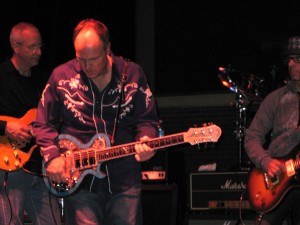
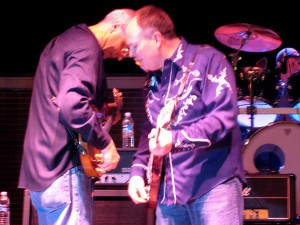
______________________________________________
Meeting Les Paul Himself!!!
‘t Was at the tail end of 2006, when I flew again to the gorgeous city of Boston, Massachussetts, or as my friend Jessica Sollee used to say: Mass-atchOU-ssetts, in pursuit of said Jessica I flew into this city on my first ever US-visit in the same autumn-Indian-summer days but that was 1985, when we were all so much younger still, and flamenco-dancing-and-playing thru life….
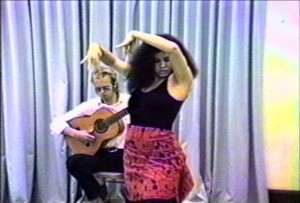
Already in the connecting airport of Houston it was clear that the wrong label had been affixed to my luggage by a sleepy musician/skycap, who had disastrously so also packed my 1970’s Gibson guitar case in a plastic bag, with luggage tag on the bag not the case, and in spite of all re-assurances by the airline, my guitar did NOT show up at Logan Airport, although my toothbrush, underwear, and outrageous bell-bottoms (in other words: my suitcase) DID appear on the luggage caroussel.
A disaster. For was I not specifically in Boston to demo my guitar (the Electric Gypsy La India #011) at the Boston Guitar Show? Now what? For the guitar showed nowhere in the system…
Well, I took the train up to Malden to meet up with my friend Paul Murray, at whose house-filled-with-guitars-and-amps I was to receive great hospitality in the days ahead. Paul had some tales to shed himself, but indeed, the following day (thank goodness I had flown into Boston a full day early to be able to hang with my friends) we DID locate the guitar: the airlines had put out a search for the blackest-of-black cases known to mankind and found it, somewhere in the Atlanta airport I seem to recall. My business cards were inside, so ownership was never an issue.
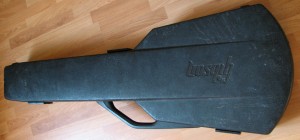
All good and well, and apparently in ‘nearby’ (for Texas standards) New York Mr. Les Paul himself would perform at the Iridium Jazz Club on Monday (the guitar show being over on Sunday) and that was exactly the day of my return flight to Austin.
What to do? Well Evert, my record company boss, good friend, and business partner in the guitarmaking (ad-)venture, put in a quick call to the Iridium and, using his considerable verbal talents acquired as Record Biz Honcho and West-Hollander, organized an audition with the Master. And I talked the airline into changing my return flight without charging me extra. “Did I scream when you lost my guitar? Did I in any way behave other than courteous, understanding, and polite? Do you agree that a recompensation would be in order?”)
So on again a most gorgeous Indian-summer-day, we set out that Monday Morning, ‘we’ being Paul, myself, and the most interesting gentleman by the name of Ed Young, or Eduardo, for he is (among many other talents) a flamenco dancer and absolute buff, and editor of a web site devoted to Flamenco in the New World (planetflamenco.com), but he is also an absolute jazz freak and therefore enormously looking forward to catching a show by, and meeting in person, Mr. Les Paul. For Les Paul is not only one of the absolute pioneers in the development – no, the invention – of the electric guitar, and the inventor of multi-track-recording (absolute sine-qua-non of modern popular music); he is also an icon of American music before Elvis shook the stage.
Thus, although the conversation was as light as our roadside coffee, anticipation level was high and mounted as we descended the stairs to the holy-of-holy: sound-check by the Master, for Les Paul still insists on a sound check prior to every show: a consummate professional.
Who was flabbergasted to find a tall, bald Dutchman hand him a guitar that was (in Les’s own words:) “As close to what I have been doing as I’ve seen in a long, long time!” He insisted on A/B-ing the Teye with the Les Paul, switching back and forth between guitars many times, and running the Teye thru a rigorous test. I briefly explained the control panel to him, but froze in my tracks when I got to the MOOD-knob, for how do you tell the Master that the MOOD-knob accomplishes FENDER-like tones from this Les Paul shaped guitar? Smiles came on Paul and Ed’s faces when they heard me stammer: “…and the MOOD-knob makes the guitar go from thick Les Paul Tones to more ….eh…. thinner sounds…”
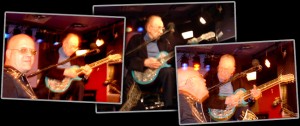
Les Paul had nothing but compliments for the guitar. He said it was “…as good a box as mine”, and complimented me on my bridge construction: “…much better than mine”. He first planned on using the Gypsy for a song or two, but then the Gibson rep walked in and that plan was shelved.
(We were sitting in the dressing room, Les Paul, the Gibson man, myself, and a fourth person who handed an Epiphone LP to Les with the request he sign it, for the birthday of a friend. “How old?” asked Les. “Forty”, was the reply. Ah, the big 4-0, I wish, oh I wish, it came from three mouths. Upon which the ninety-three-year-old Master exclaimed: “Forty? FORTY? I’d settle for …eighty-nine!”)
The Gypsy, although not in the Masters hands, sat on his request high on a stand right next to him, the whole set.
In the break, he sat me down to talk shop. For he would never have used aluminum to achieve what I try to achieve and Les himself has tried to achieve: a crystalline top end from an otherwise dark guitar. Les did it by rewinding his pick-ups to be low-impedance; I do it very differently, yet in our own way we achieve what we set out to do. Using the couch as example, Les explained why he disliked Aluminum, and using the same couch I explained why I did. A line of people snaked down the hallway, all waiting for an autograph and I mentioned this, but Les said: “Sit down! I wanna talk to you about this guitar!”
To say that this was a magical moment doesn’t even do it justice. Here sat the very man whose creation I had adored for all my life, talking shop with me. The I am not worthy deadpan flashed thru my head repeatedly, but I had to remain ‘with the lesson’ as we say in the Netherlands, for Les Paul was probing my mind with his questions, and I was walking a fine line between trying to impress him with my solutions, and not divulging all my innermost secrets. For this man is still closely connected with Gibson…
When Les finally let me go, he gripped my hands in both his hands and wished me “all the success in the world with your guitar building”, and the only thing I could add was that the great joy of this moment for me was only matched with the sadness that I could no longer tell it to my father, who as contemporary of Les Paul, and an accomplished and very successful engineer and inventor himself, would have glowed with pride and satisfaction.
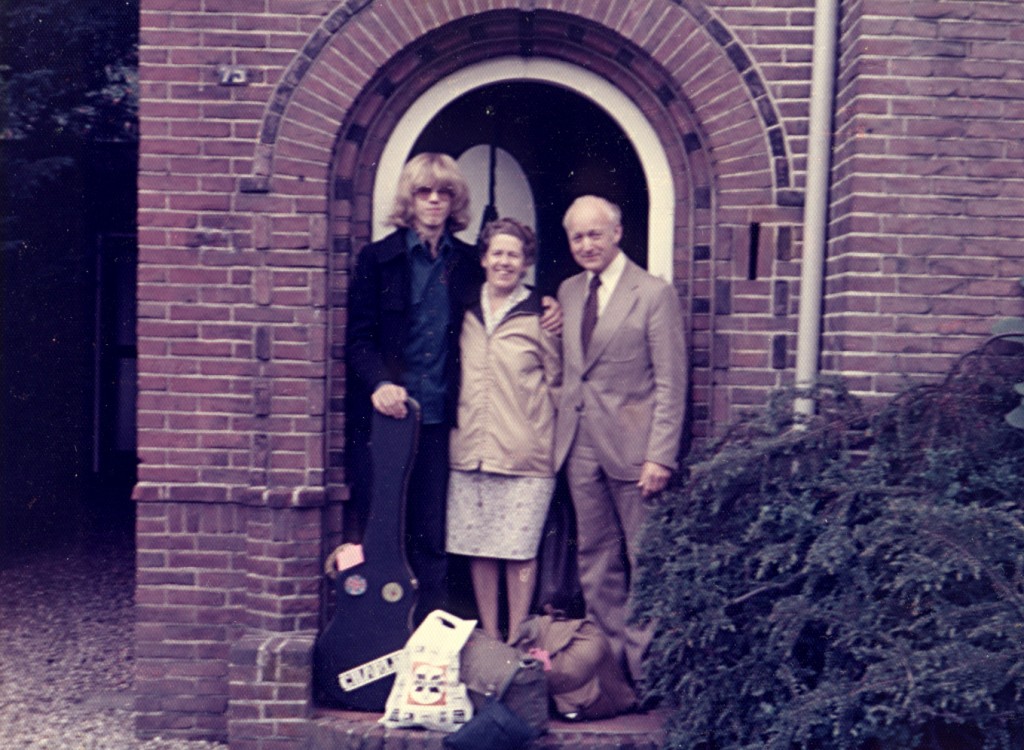
Alas, the magic of such moments rapidly subsides once back in the New York traffic, and further on the 95 highway, where the late-night-roadside-dinner left to be desired. So much more telling it is that we arrived back in Malden, at daybreak, by way of an errand in Jersey a good stretch to the south, still flying high on the events of the night I met Les Paul.

Going to the USA 1
“t Was the summer of 1985, and just like I had done in the prevous three summers, I headed out for a two-months-stay in what according to me was then the World Capital of Flamenco: Córdoba, in Andalucía, or southern- Spain. ‘t Was also there that Paco Peña held his annual guitar courses which had miraculously been re-christened from “Cursos de Flamenco” into “Festival Internacional de la Guitarra”, to encompass classical, jazz and even rock guitar. My rock band “Cleopatra and the Shakin’ Sphinxes” had been booked to play the amfitheatre for this occasion!
I participated – as always – full of enthusiasm to the guitar courses. Paco Peña is a great Master guitar player, one of the very best guitarists I have ever witnessed, and he knows how to explain the difficult and mercurial art form called Flamenco to all those who did not have the privilege to grow up surrounded by it. I know, many people view Paco’s style as traditional at best, and see him a second to many more ‘modern’ guitarists. Let me tell you, I have seen the man up close, with a guitar in his hands, and he can do almost anything with the instrument. I have found him (like the Dutch guitarist Jan Akkerman) almost intimidating to the point that I want to simply give up on playing altogether, IN THE DRESSING ROOM, only to revert to the normal repertoire on-stage. Believe me: Paco is scarily good in a private setting! And I am studying with him! (It even gave me mention in “El Libro de Oro de Córdoba”: I’m the blond pompadour sitting front row with my hand-painted T-shirt and white guitar case)
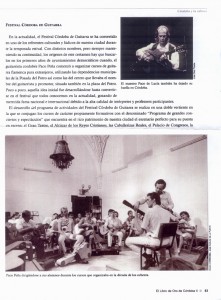
In the afternoons, when classes were over, I would gravitate to the big dance class room where several motivated dance students were perfecting their newly-learned steps in front of the big mirrors (and fans). I volunteered to accompany them, eager to learn and hone my dance accompaniment chops, and was warmly welcomed. Then I met, and immediately fell heads over heels for, a beautiful dancer from Boston: Jessica Sollee. From that moment on, all my efforts, accompaniment and otherwise, were focussed on her.
Her dance teacher, Carmen Cortés, wife of the incredible guitar player Gerardo Nuñez, got me to accompanyy her on the Spanish TV-cameras… And she participated in Gerardo’s big showcase performance, where I met another person who was to be absolutely pivotal to my future life: Texan Gary Gibbons, who lived in the same house in faraway Granada as the ‘cellist of Gerardo’s ensemble. We hooked up over a set of batteries (no lie) and immediately became friends. Gary then invited me to his appartment in Granada, where he spent the summer building a flamenco guitar called Bigfoot (I’m NOT making all this up).
Jessica and I finally cut thru the gossip and back-stabbing of Paco’s patio (other men were after her too) and after my bands’ show in the theatre, and more adventures in the gypsy town of Morón de la Frontera, and a pleasant and friendship-cementing stay in Gary’s Granada-residence, I followed her to Paris, where she was living at the time.
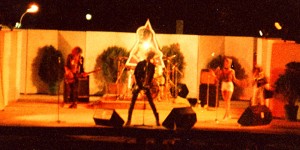
Cleopatra and the Shakin’ Sphinxes to perform in Córdoba: I was
already there, setting up promo and equipment, and arranging all practical
details, and then bassist Martinus and drummer Joost traveled, together with
Joosts’ wife and temporary back-up singer Yvonne in Joosts’ green Volkswagen to
Cordoba where they immediately ignored my carefully prepared directions and
crossed the Guadalquivir at the wrong spot. Exhausted from the long trip, and
pre-Googlemaps, GPS, and cellphones, they finally pulled over “To see if we
don’t hear him” (my loud conversation reputation…).
I, meanwhile, was awaiting my band with impatience, and stood at the fountain
of El Potro, accompanied by my gypsy friends, having as always a grand ole
time. Joost happened to pull over right at the bottom of that long square, by
the river, on the side of the pre-freeway N-IV. And, yes, they …heard my
thunderous laugh…
We did several promotional spots on different radio-stations (“Okay boys: last
song”, fine, we put on our signature song, the 12plus minute “King Kong
Singalong”), one on “Radio Libre” nicknamed “Radio Pobre” where all mics and
audio equipment was wired in parallel so that I could sabotage the answers of
our pesky opening act simply by flicking the on-off switch of my microphone…
Local stores played our video performance tape non-stop in the days leading up
to the show, and it was… incredible. We demanded and got the same dressing room
as Paco de Lucía, had three photographers, I did the Chuck Berry duck-walk on
top of a two-brick wall that I’d always fantasized about, we almost blew up the
rental amps, and were pelted with rocks and beer bottles by envious local
bands… An adventure.
***
The adventures in Moron were this time more than anything tainted by the becoming a drug addict of my friend and gypsy prince Antonio. Nicolas explained a lot to me, but basically the atmosphere was a lot less friendly than the year before. I was this time relieved to get out alive.
***
Staying at Gary’s house meant sleeping on top of the roof, under ample cover, and upon waking up seeing a panorama that not even the most expensive hotel in town had to offer: Gary’s roof was exactly opposite the famous Alhambra, or red palace, the epitomy of Moorish architecture in Andalucía. Gary and I spent as much time with a guitar in our hands as without, and we became very good friends during long conversations. His super-enthusiastic talk about his home town Austin, Texas, made me almost fall in love with the place already.
***
Summer in Paris with Jessica: it was everything anyone could ever wish for. One little drawback: Jessica was about to return to the States, by way of southern France… I remember vividly putting her on a train, writing a song about that and then planning on visiting her in Boston…
***
Upon returning to the Netherlands and my Conservatory of Music classical guitar studies I learned that since the director/coordinator was overworked and sick, there would be no school for at least six weeks. Time to re-think my situation. More than anything: how am I to acquire the funds for a trip to the USA?
After briefly contemplating to sell all my guitars, the solution presented itself to me. Don’t sell ‘em, play ‘em! I quickly made a little information booklet about flamenco, and me, hiked my guitar case to my shoulder, mounted my (grandfathers’) bicycle and started to tour the bars in my town (Groningen). Flamenco was a relaitvely new phenomenon in the world outside Spain (hovering on the edge of becoming hugely popular), and I quickly found the perfect way of booking my gigs:
- “Hello, my name is Teye, and I play the flamenco guitar, and here’s my information” (presenting the booklet). “Oh yeah, great, gimme your demo tape and I’ll listen to it and let you know” (translation: I’ll throw it in the trash next to all the other demo tapes). “Well I don’t have a tape, but… I have my guitar with me, I could play something”. There’s ALWAYS a drunk hanging in the bars in Groningen, and the reaction was always the same: “Hee, yea, let him plplplay a little, heeeere, I’ll buy him a drdrdrink!” So I would play, pure (soleá), then commercial (rumba), then exciting flamenco (bulerías), and without fail calendars would appear and gigs would get booked. Seriously, it worked.
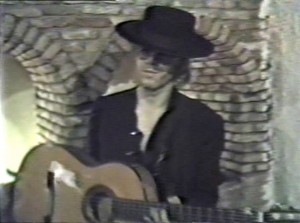
And so I arrived at Jessica’s doorstep in Boston a few weeks later, with pocketfuls of money. This can be regarded as the real start of my professional career for all of a sudden I realized: everybody’s been talking BS to me: you can easily pull this off, just gigging around town and living off of that.
And HERE is an old dutch TV-clip of Teye:
Anyway, at my first night at
Jessica’s house, the phone rings. Incredulous, Jess hands me the phone and
says: “It’s for you”.
My good friend Gary Gibbons, welcoming me to the USA and informing if I’m gonna
make it to Austin…
Well, I did. Trailways had something
called “See the USA for 10 bucks a day”, so a few weeks later I climb down from
a big bus and for the first time set foot in Austin, Texas. Let me describe my
first evening, and you maybe will understand why I now live there:
At about six PM, Gary picks me up from the Greyhound station and we go have
dinner on the East side of town, in a wonderful Mexican restaurant. Afterwards
we go pick up Gary’s sixbyten Fender amp that he has loaned to a studio, we end
up jamming ’til around midnight, at which point we hit sixth street and watch
two or three bands (on a slow weeknight). It must be around two-thirty when we
arrive at his appartment. Gary asks me to modify his 1959 Les Paul Junior in
the Teye-signature way (it has been refinished and equipped with a humbucker
and Grovers already, so purists put away your pens), for which I need aluminum
foil, nail polish and tape. Now in the Netherlands, at 2:30 AM, you can forget
about it, but in Austin we simply go to the 7-11 and score that, plus some
coffee and chocolate, and I modify his axe… Heaven, in other words.
(here my wife Belen (in the red dress) dances with Jessica on our 2005 East Coast tour, in “Johnny D’s” in Cambridge, Massachussetts)
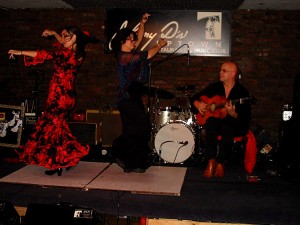
(more later)

Going to the USA 2
Hired by Joe Ely: my foot in the door
In 1992 I was introduced to Texan country-rocker Joe Ely, and besides some of the most adventurous guitar playing of my life, this also meant: finally a US work permit, then Green Card, then Citizenship.
It was during my lengthy visit to
good friend Gary Gibbons (maker of a flamenco guitar called Bigfoot, see above)
that he introduced me to Joe Ely. Gary was Joe’s daughter’s piano teacher, and
the story more
or less goes like this:
While I visited Gary in Texas, Joe was in Spain on holiday. Gary had
recommended he visit Cordoba, Sevilla and Granada rather than the more typical
places to visit for travelers from the US: Madrid and Barcelona. And Joe obliged:
he even visited the tiny shop of Manuel Reyes, by chance!
Joe returned to Austin right before I had to fly back to Europe, and Gary asked
him if he could use a flamenco guitarist who understood Western music also.
Immediately, Joe said: Thanks, but no thanks.
Only to call back two minutes later: Well I’ve written some songs in Spain, why don’t you bring by that guy, see what he can make of them.
To me, Gary said, we’ve been invited to Joe’s place, why don’t you bring your guitar, you never know…
So I found myself playing in Joe’s
living room. Joe’s eyes opened wide, and he invited me to his recording studio
next door, where he had quickly put a rhythm track down of a new song, with
drum machine, synthesizer bass, an acoustic guitar and scratch vocals. I tried
some different approaches and quickly settled on a soleá-type guitar style.
This was the very first time Joe used his brand new ADAT digital recorder…
The track I recorded that night, complete with a punch-in overlap mistake,
ended up on the album “Letter to Laredo”: Joe replaced everything else but
insisted I did not touch my original track… The song, about guardia civil and
Spanish lace, is “Run Preciosa”.
That winter, I was back in Austin,
staying at Joe’s house but never playing together since he just returned from a
4 month tour of the USA.
But the next summer, I was back and we actually started recording demo’s: Joe
had abandoned his original plans for the next album, and was now planning to
make a travel epic with my flamenco guitar incorporated! He needed material to
convince his then-record-company MCA, and we set about recording some. Joe fed
me some songs to work on, and by chance I heard an electric version of a
beautiful ballad.
“Joe, can I please play on THAT song?” But he really wanted to keep that an
electric track.
The next day, that song AGAIN came on, by chance. “Joe, can I please play on
THAT song?” No, really, electric.
The next day, while preparing for yet another song, Joe was called away. He
said: Here, you know how to work this thing (the ADAT), why don’t you put some
acoustic tracks on the song you like so much, while
I’m away?
Realizing that I’d better not blow
this chance, I put on several great flamenco techniques, integrating them with
the beautiful beautiful chord structure and lyrics. Joe, upon returning, was
blown away, and the song became one of my signature songs in his repertoire.
Bruce Springsteen added background vocals, and Jody
Denberg of Austins’ great radio station KGSR played it one night as I returned
from an Ely show to my Airstream trailer in my old old El Camino and said a
bunch of really nice things about my playing…
The song is: “I’m a 1000 miles from home”, and I type this with goosebumps.
Please check the song out, it is also on the “Letter to Laredo” album.
Which was the album Joe hired me to play on, that next spring of 1994. I came to Texas for 1 month, stayed two, went away with 99% of my guitar work for that album on tape; with my very own Texas wheels (a huge dilapidated Chevy El Camino) parked in Joe’s yard; and my first work permit applied for.
My decision was firmly made: THIS is where I want to live.
The next year, with a US work permit in my pocket, arm-in-arm with my soulmate and future-wife Belen, I moved to Austin, into a great Airstream trailer and a very bright future. Touring started almost immediately, and I am proud to say that I saw all 48 lower states, and played in most of them!
Joe kept me in his touring and recording band until the summer of 2000, when Belen-and-my European tour clashed calendar-wise with Joe’s big US tour. Truth be told, by then already the exhilarating adventure of trying to fit a flamenco guitar into Joe’s electric band had morphed into a day-to-day routine: “The Gilded Cage”. Joe as well as I needed new challenges, and the end of our collaboration was as logical as the beginning. Joe went on with “Los Super 7” and the “Flatlanders”; I joined Belen in our great flamenco ensemble, and later of course started to make guitars for a living.
Big surprise then, in the spring of
2009, when a phone call came in:
“Hello, this is Joe ….(cell phone static).” So after almost a decade, the first
thing I say to my former band leader is: “Joe WHO?”…
But a few weeks later, we were on stage together again! And without even a hint of rehearsal, it sounded fantastic: just like in those heady days of 1994, it sounded as the music I was born to make.
Joe has wild plans for us, but Joe
being Joe these may or may not happen (the man has more ideas than he could
ever realize in ten lifetimes).
Me? I am secretly very much hoping that they DO.
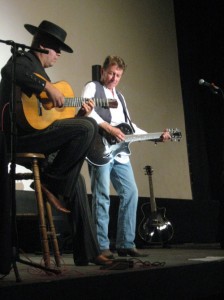
with
Joe Ely in the Odeon theater in Mason, Texas, May 2nd 2009
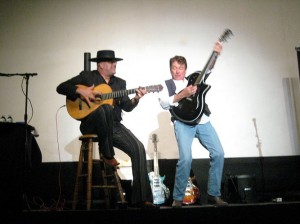
we are both wondering: Is This Fun?

and
I even got to play my own “La Llama” guitar
. . .

Meeting Lester Devoe
The great flamenco-guitar-builder who does not speak Spanish.
(will write this story here tonight)

The Barbarians of Sevilla
or: It’s all their fault.
Between the incredible summer of 1994 when I met my soul-mate and future wife Belen, and 1996, she and I played together mostly in a rock idiom: Belen on drums, and I on the six strings. Then after we got married we started our flamenco-ensemble (see above) and the Loud Music took a back-seat for almost a decade. We’d play after-hours jam-sessions with musician friends, but Belen didn’t even own a drum kit most of the time!
In the spring of 2005, we started a rock band again, our friend Tim from St. Thomas gave us the hilarious name of

and we started performing on the strength of our new, trailerpark-recorded demo. Here’s the first line-up:
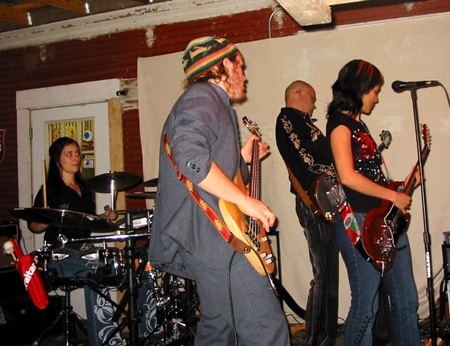
(l
to r: Belen, George Lohr, Teye, Elena Llamas)
At first, I simply played my two
Tony Zemaitis guitars during rehearsal and gigs, until a friend pointed out
that these guitars were not ‘around the $10,000 mark’ as I assumed, but four,
five, even seven times that…
At which point I retired the Z’s and started shopping around for a replacement.
Did I really have to dish out $4k for a Gibson that I didn’t like so much?
Like in the old days in the Netherlands, I started to build my own again. From scratch, I made a 2-tube overdrive, a VOX-inspired amp, and then my dream guitar, in which I tried to remedy all my complaints with the existing electric guitars. I built her just for myself, called her the Electric Gypsy, and jumped on-stage with her:
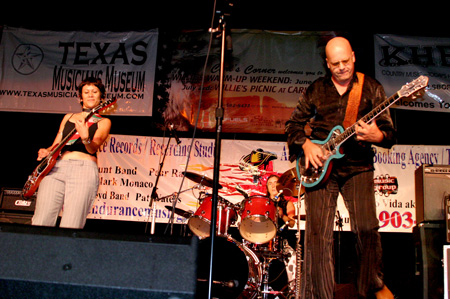
Well, the rest of the guitar-story is pretty much well-known: people started offering me large amounts of money for my Electric Gypsy guitar, so now I’m a guitar builder…
So let me give you The rest of the Barbarians-story:
- First, our super-talented bassist George left the parental nest (he was 17 when he joined us): we found a great new bassman in Bruce Krekow.
- Then, our fantastic singer/guitarist/songwriter Elena got offered a huge scholarship to the University of San Diego, where she would be in a position to ‘really make a difference for my people’.
- Our great drummer Belen, my beautiful wife, gave birth to Lucia, our beautiful daughter, and that was at least the temporary end to her music and dance career.
Bruce and I, who had struck up a fantastic friendship, were eager to continue playing. We started hosting a monthly jam called GypsyFest, first at our almost-local-bar The Oaks, then when that closed, we moved the jam to the Watering Hole, a saloon just outside of Austin. We were having a great loud time, but were also shopping around for musicians for a new version of the Barbarians.
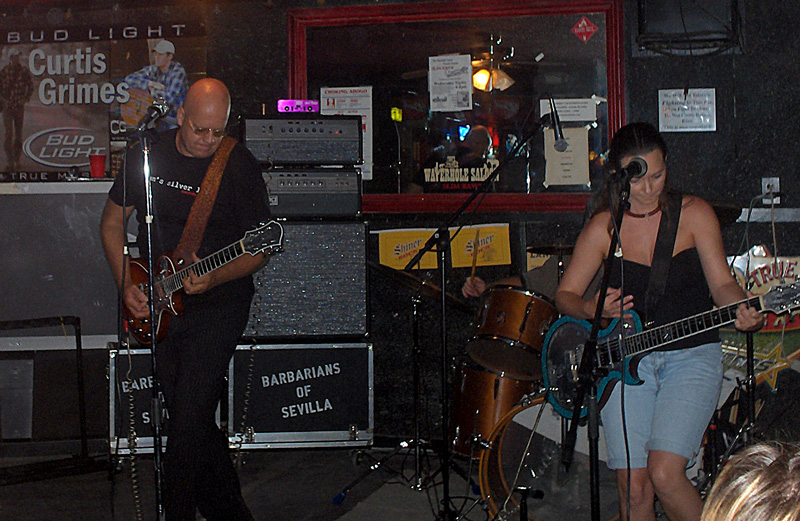
Then, after a few tentative line-ups, we found two musicians that really fit incredibly well: Andy Gilder on drums, and Aubrey Caldwell on vocals and rhythm guitar. Again we recorded a demo, this time on an old Roland digital mixer/recorder, in a two-car garage in Manor… And started booking again:
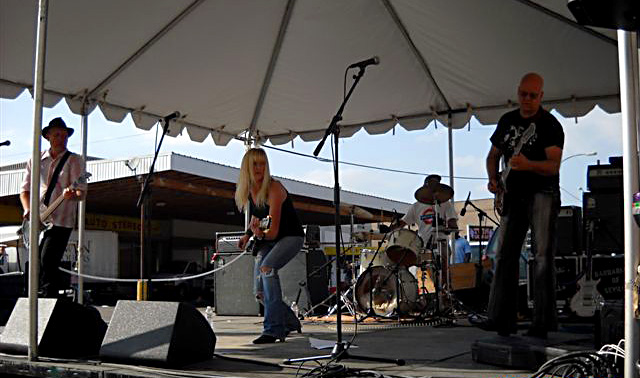
(Pecan
Street Festival, Austin TX, May 2010)
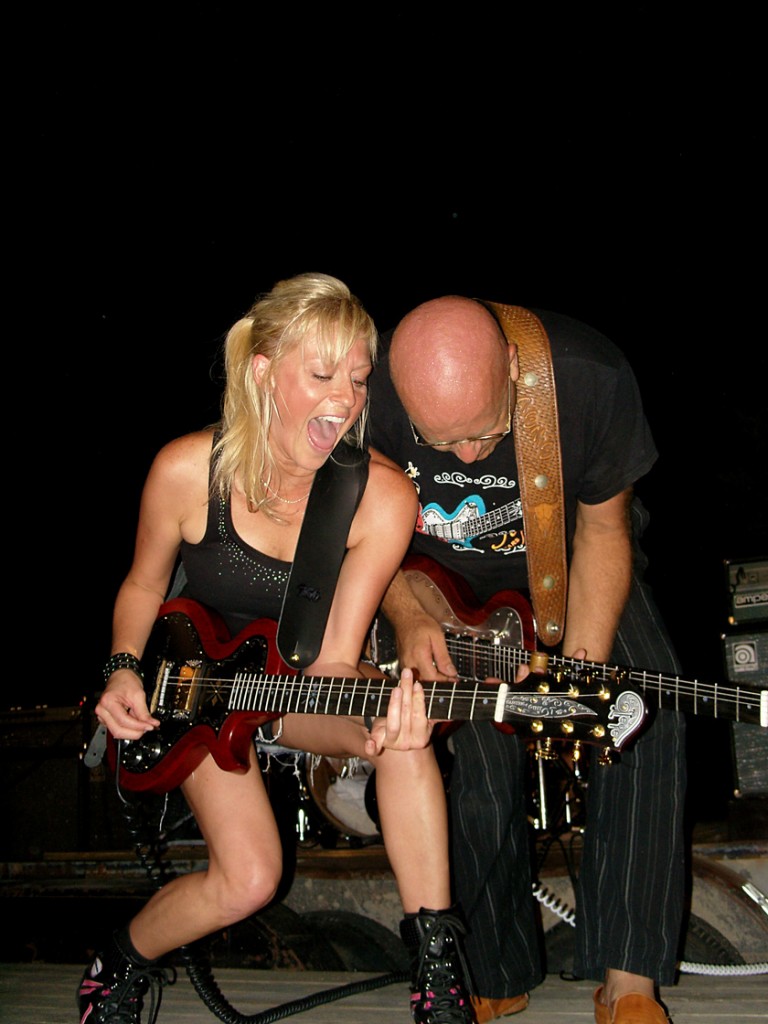
(Gypsy Guitars party, August 2010)
Then the unthinkable happened: Aubrey was moving back to Ohio. Now what? How would we ever replace her? Bruce’s wife Lin predicted: You will find a singer of the same great talent sooner than anyone thinks. Lin is known for her wisdom, and extraordinary gifts.
Six days after Aubrey’s good-bye performance, we auditioned a singer, and six days after that, we debuted with the new line-up. To sum it up: Aubrey left mighty big shoes to fill, and Vanessa stepped right in and filled them.
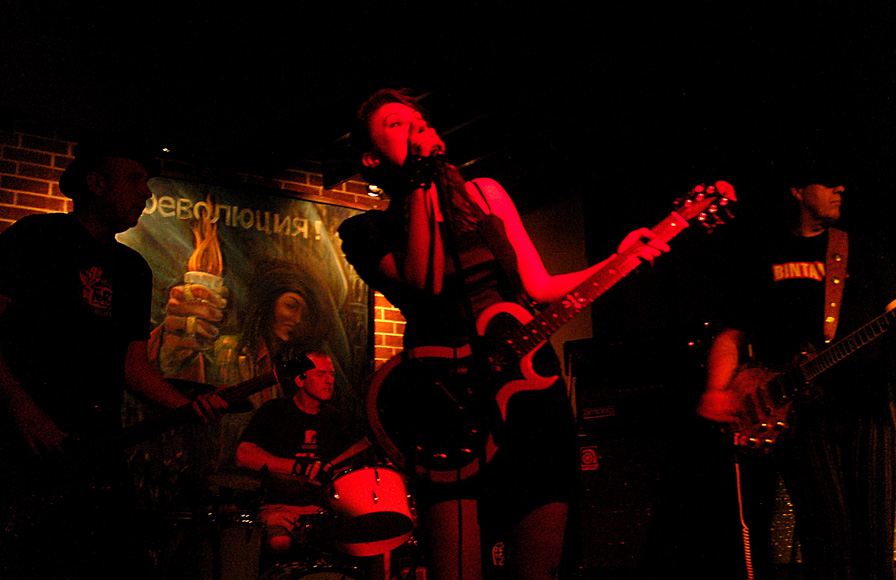
Then, after some great productive years of collaboration with many performances and our first CD, Vanessa decided to move on.
And… the Barbarians were so lucky to find another totally rock ‘n’ roll singer: an incredibly talented young woman who came to Austin very specifically to …SING… – enter Christine Amaro, and let’s crank it up again! This new edition is without a doubt in anyone’s mind the best line-up of the Barbarians. Christine is a tiger, ferocious and talented, and inspires her band-mates to give just a little extra. We can’t believe our luck that we found her.
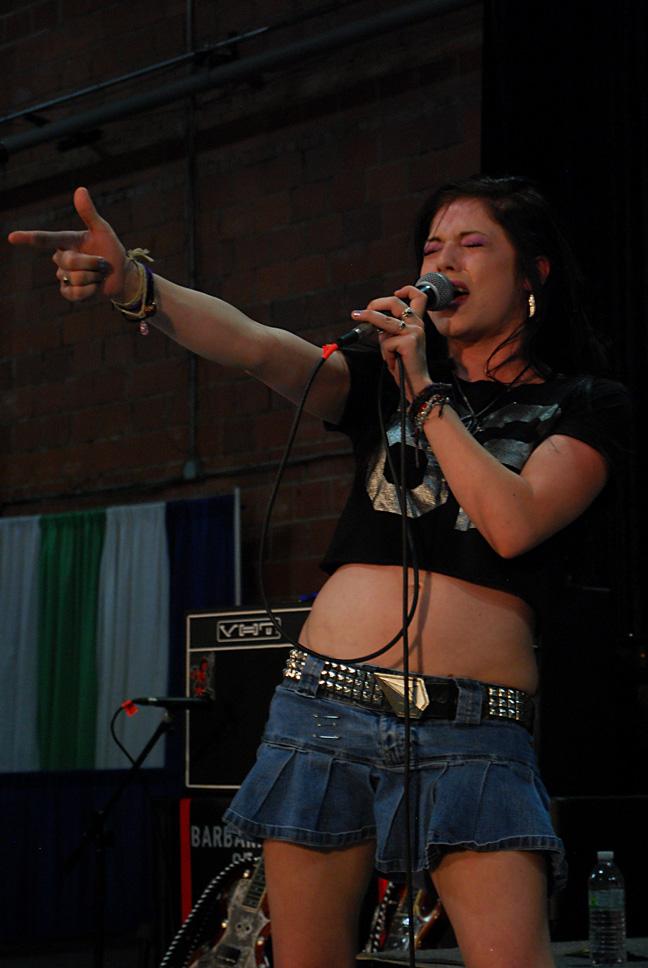
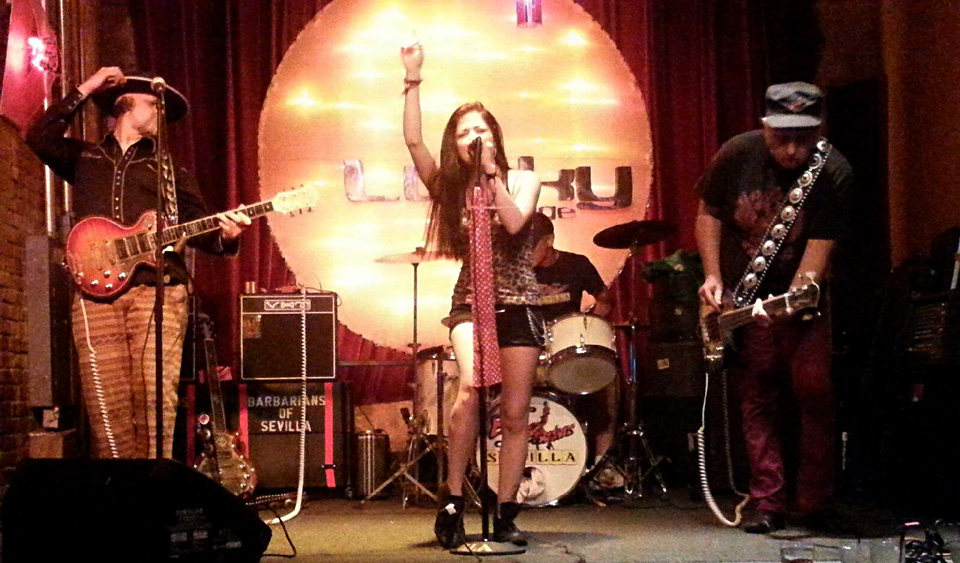
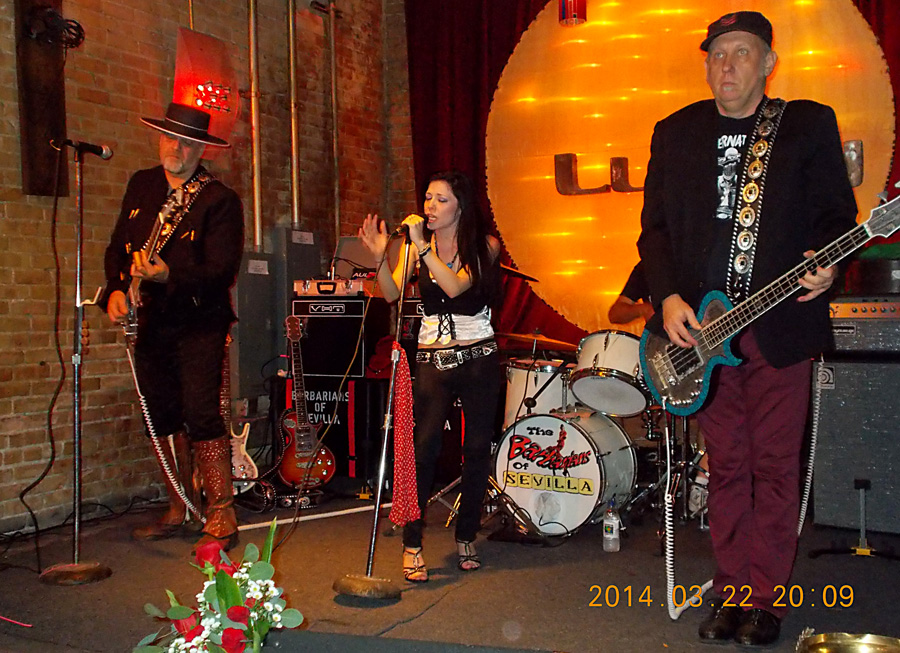
We can say without a grain of exaggeration, that it is the band The Barbarians of Sevilla that is 100% responsible / to blame (depending on your point of view) for my being a guitar-maker! Without the band, I’d not have constructed that first Electric Gypsy; I’d not have found out that many people really really REALLY want one too, and I’d never have tooled up and established myself as a luthier, much less started a guitar company.
So, I say, it’s time for a visit: www.barbariansofsevilla.com

To the Stars?
Teye performs and records with the BINTANGS, after 35 years
One late night in the spring of 1975 there was a VPRO-radio-special. VPRO were the radicals, the revolutionaries, the independents, the lefties. They always put on the greatest radio specials on little-known music. It was thru them that I discovered Buddy Guy, Junior Wells, Bo Diddley, Muddy Waters, Cajun music, the Flamin’ Groovies, and the Bintangs, which turned out to be a Dutch band, around since 1961 (older than the Stones?!) They had a brand new album out, and were performing the following day on VARA-TV (more lefties!) to promote this album, called Genuine Bull. I was dumb-struck. This was one of the best bands I’d ever heard, and they lived about an hour and a half away? I immediately became super-fan of them. They had one song on that album, Agnes Grey, that to this day is one of my all-time favorite songs. (Years later, I got to know my business partner Evert Wilbrink thru his re-release of this album on CD, and still years later I gently pushed Evert to leave the original album alone and put the bonus tracks on a second disc, which together became the genially remastered re-re-release of Genuine Bull: the 2-disc Deluxe Edition). As a teenager, I visited many many BINTANGS (Malaysian for Stars) shows, hitch-hiking thru the night (which also got me hooked) and I even got them a headliner gig at the Drachtster Popfestival which my buddies of the band Manila Madness organized, back in ’78. More fun was to come when my band Teye’s Mess Express performed in the Bintangs’ hometown of Beverwijk and we impressed everyone by walking with our guitars into ‘their’ stamcafé (regular bar) and instead of being beaten up, were offered beer ’cause we had Bintangs stickers on our guitar cases. Then we impressed their road manager in a Chinese restaurant where we put complete plants in the dishes to up their green-value and looks, and took some peanut sauce in an almost empty Marlboro package in the shirt pocket – for later. This is also where I saw my first El Camino, another thing that blew me away, as later years would see.
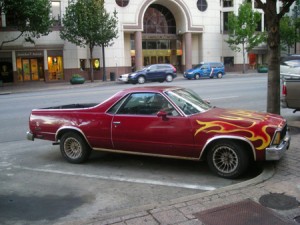
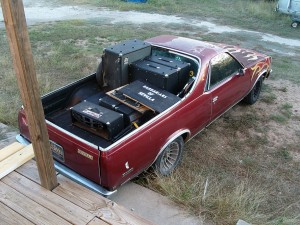
(my
Texas ride for the past 14yrs: a 1980 with super-fast engine and carburetor…
hauling amps…)
Evert got wind of the BINTANGS festive recording of a Live-CD to commemorate (nah – celebrate) their 50th anniversary. He approached leader and original member singer/bassist Frank Kraaijeveld to use me on the song Agnes Grey (which I’d played off and on with various bands the past 35 years) and have me play the original slide guitar solo. Evert kept bragging. Frank knew me (my band the Mess Express had opened for them several times in the early eighties) and gave his OK. As it so happened, my November 2010 European visit coincided with the recordings (or did we make it?). Fresh in from Sevilla, I gave a guitar clinic at MAX Guitar Store in Den Haag (where I presented the 2-pickup-version of the Electric Gypsy: the very first one was at MAX) and then my friends Jan and Siep (Electric Gypsies A-003 and A-029) drove me to the to-be-recorded concert.
I had told BINTANGS-roadmanager Simon: “Don’t worry: I’ve done this before: I’ll be on time with equipment that works.”
Immediately after leaving Den Haag, we arrived in the traffic jam: the entire freeway was transformed into a parking lot. Our two cars of course got stuck in the jam as bad as everyone else. Four-and-a-half hours delay! I called from the Dutch highway to Nashville, to Evert, who called the BINTANGS with updates. If Evert cannot smooth it over, NO ONE can smooth it over.
Finally we arrive at the venue: a large hall in the middle of nowhere. Fresh snow is on the ground. I suggest Siep to back his car to the venue, so we can unload his 1970′s Ampeg VT22 (rather heavy) guitar amp that he’d promised me months ago.
Siep says: “What amp?”
So in I walk, 4 1/2 hrs late, and without an amp. Surely, there is NO WAY I can still be on this recording.
But in walks Frank, mr. charming himself, grinning and saying (and summing it up, really:) “Teye! Finally!” Quickly they assemble the band, we run thru Agnes Grey twice (me on their spare amp, a little sixties 1×12 Ampeg with mysterious un-labeled inputs in weird places), and then we eat. The show was absolutely great, and I believe so was Agnes Grey…
35 years. This brings to mind what I always tell my customers: “Patience weeps at the beginning, but smiles in the end”.
bintangs.nl: the current line-up
By the way, the album Genuine Bull is to my taste among the top 5 best rock albums ever released. You owe it to yourself to check it out. The Deluxe Edition sounds incredible. True 1970′s magick!
LATEST NEWS: Teye performs with the BINTANGS again in Amsterdam’s ‘Paradiso’ on Sat Feb 26.
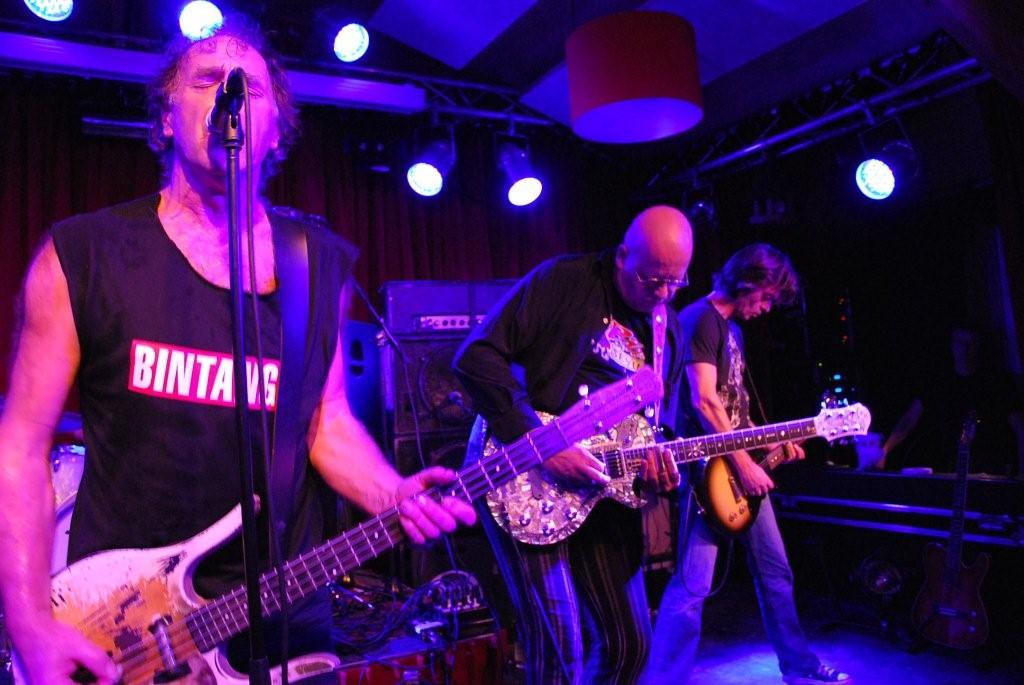

1970′s
Or how we would open up 100W Ampeg amps in tiny clubs in the Very Liberal Netherlands…
Ah! Sweet memories! How did it all get started? With my buddy Jan Weenink (La Mora A-003), I remember starting a band and rehearsing in his father’s garage, in 1973. We’d roll out a 300 foot extension cord across a soccer field and run our old wireless sets (that we used for amps), a lightbulb, and an electric heater thru that. Our first gig at a school talent show was an absolute success; our second gig in the local youth center blew up our New Amp, and the band too. I get offered the lead guitar spot in the band of a guy who would act in the first Dutch rock’n’roll movie “Blood and Blond Hair”.
Next thing we know is, I’m in London, failing miserably as long-haired virtuoso lead guitarist in the new Punk climate (“We don’t need no bloody guitar solo’s) and moving back to the Netherlands, to Groningen, starting another band with Jan Weenink, freshly returned from an inspiring 3-month hitch-hike around Spain and Portugal. Priceless are his stories: when a Portugese supermarket lady refuses to help Jan find milk – with milking and drinking gestures, there can be no hiding behind language barriers – he leisurely loads up a shopping cart and lets her ring it all up – this in the pre-barcode days – and then, when she says the total amount due, it is Jan’s time to say: No comprendo.
And then there is the Teye’s Mess Express! Early 1980′s absolute terror, way too loud and way too anti-social! We performed in all black-and-white stage clothes, even striped our Ampeg amps that way, which amps we would play all the way open to get that great 70′s rock sound at the cost of our (and our audience’s) ears. Our axes of choice were the see-through Ampeg Dan Armstrong guitars, of which we acquired three: two guitars and a bass. What can I say? Many a barfight was initiated over our (mis)behavior, not in the least by my habit of performing neck-and teeth-solos in the audience with a 75 foot-long cable driven by a home-made signal booster strapped to my belt (the out-of-control 1000x gain ‘butt-box’ built by my buddy bassist Martin MB Gerritsen) and swinging my guitar over the neck and back of the dancing beauties, often pulling them to the ground with me by just falling backwards… Classic moments among which a screaming audience that threatened to smash all our equipment if we stopped, while the police threatened to confiscate all of it if we continued (this on the protest-filled day of the controversial crowning of our Queen Beatrix, when we still had a late-nighter to play at a red-light-district club named the Talk of the Town, from 2AM til 6, with the club owner mostly intoxicated and the scene of many a wild story), or me driving the van, after a provocating local yokel chapter had molested our load-out and had literally pissed on our gear, over the neatly parked-in-a-row mopeds of those local yokels… Or how the police had caught us red-handed applying some band graffiti on the railroad overpass and took us in for questioning similar graphix that had appeared all over town, and how one officer had to pedal the push-bike that we used for local equipment transport and that we constantly kept with one flat tire as anti-theft measure, to the police station, thru the snow…
It’s not hard to understand that my subsequent move: a haircut, neat clothes, a nylon-stringed guitar, and my entry into the classical Conservatory of Music, came as a surprise to many a friend. And then, hitch-hiking thru the south of Spain, I encountered the road into my New Life: the wild and uncontrollable flamenco of the Gypsies there, and nothing would ever be the same for me again. Conservatory studies logically suffered, and by the second half of the 1980′s I’d flunked out, proclaimed myself a professional musician with dozens of performances each month, and founded my next band: “Cleopatra & the Shakin’ Sphinxes”, this time all in gold, cream, red, and other Pharaonic colors, but still just as loud as ever (or worse, as I made the move to a stereo setup with TWO 100W Ampegs). Whereby I ended the incredible decade with as much controversy as I’d begun it. Our last Cleopatra-performance was in Germany, where I had insisted on a clean stage, meaning that the support acts must remove all their gear from the stage but interpreted differently by the organizers who descended on the stage with brooms and mops. And were of course very offended when Rob, our exhibitionist ‘actor’ and sythesizer-player drug a pink oil barrel/trash can onstage and proclaimed a welcome from it, dressed only in a leather Army Greatcoat and knocking the barrel over when he stepped out of it, causing our fantastically virginally beautiful backup singers (two talented violin students from the Conservatory!) and myself to have to kick the coke cans, beer bottles and other assorted trash out of our way when we hit the otherwise spotless stage…
The 90′s brought me in bands like the quasi-punk Killed in Action, the red-neck rockin’ The Rebels, and the experimental Rocking Teenage Combo where I ran my guitar thru an elaborate MIDI-FX set-up straight into the PA. We were invited to tour Checko-Slovakia by the Czech Ministry of Culture. I had acquired a Lake Butler hexadecimally programmable floor pedal to control my elaborate set-up, and during my first show with it needed a moment to find the right pre-set. Booing from a competing band. Upon which I said into the mic: “By the time you guys understand how this setup works, I will already have bought something else”
Which by then had become pretty much the reality. I was on the cutting edge of what came out equipment-wise, for every penny I spent on musical gear was of course immediately tax-deductible from my by that time luxurious income as a full-pro musician. In conjunction with hefty discounts because of frequent purchases, this made gear very affordable, not to say cheap. This is also when I started to realize that in order to get the sound I really wanted, I’d still have to make it myself, or find an incredible luthier to make it for me. The factory stuff wouldn’t deliver, all by itself.
Halfway into the nineties, I was living in Texas, touring the world first as flamenco guitarist with the Joe Ely band, then with my own flamenco ensemble, and the quest for Electric Tone had moved to the background, replaced by the quest for a great, loud, authorative, and easy-to-use flamenco-guitar-tone, for which I also ended up building a lot of stuff myself. I recall on the way to shows on the East Coast, how I dismantled a flamenco guitar on the kitchen table at my record label boss – and now business partner in the guitar-making adventure – Evert Wilbrink, to install a new undersaddle/soundboard pickup system from the incredible B-band, and his also-guitar-playing wife said: I thought you were going to replace the battery, not the entire system!
When I started making my own electric guitars, all previous lessons, frustrations, problems, and solutions presented themselves as a great platform on which to launch my guitars not as an adaptation of existing models, but as instruments with their own vision. I realize now that the many years, no, decades of my being totally frustrated with the situations I would find myself in and how poorly most of the gear would be designed to deal with those various situations, and from finding solutions that would work, were the perfect preparation for my own line of guitars (and you will soon see, other products as well). It feels like, after many decades of knocking on Music Business’ front door, I finally gave up, and when I walked away, I found the side door wide open.
Teye, Mairena del Aljarafe, Sevilla, Feb 13, 2011.

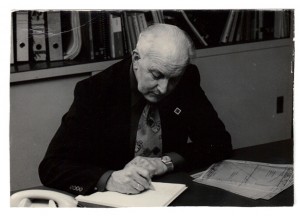
By the way, my father was the most gentle and sweetest man I have ever met. Not a grain of macho behavior, he was waaaay too intelligent for that. He was also the most capable man I have ever known. In the late 1950′s he started designing a no-break emergency power supply. In the 1960′s, after much convincing the factory where he worked to do the investment and to start making this, he had the first prototype up and running. Late 60′s, early 70′s, the factory where he worked was pumping them out. In the economic downturn of the 70′s in the Netherlands, he created jobs for hundreds of people with that successful product. And get this: as late as the year 2000, a British company built TWO FACTORIES exclusively to produce his almost-50-year old invention.
My father went on to design a
solar-powered water-pump for the third world, with the ducts designed in such a
manner that ten years of muddy and sandy water would not destroy it.
Maintenance-free for 10 years? And he achieved 20 meters of water pressure with
it (vertically)
At age 63, he was offered early retirement, but knew full well that upon his
leaving the factory would close that location’s research lab, so he stayed on
for an additional 2 years, until age 65, to give his team the opportunity to
look for other good jobs (versus having to scramble)
At age 67, he was hired on by a private firm that was working on a – get this –
electrical switch that could repeatedly switch a million amps. With those kind
of electrical currents, when the switch isn’t fast enough, the voltage simply
arcs and the air ionidizes, becoming conductive. Result: the switch simply
burns at explosion levels. The world industry leaders had achieved 10,000
amperes. My father dove in, and within a year and a half had designed an
unorthodox switch idea and the prototype held at 100,000 amperes. That’s when
his second aneurism hit, and that was to be the end of it all.
He lived a blessed happy life, was able to devote his life to his absolute
passion. The only big unhappiness was when his only son didn’t want to follow
in his footsteps, but chose the guitar as a career. I don’t think he ever
really stopped fighting that. I wish he could see me now.
And his wisdom of life was incredible. So much of his advice I still use to
this day. I’ll give you an example. When talking about how I was unhappy with,
and planning on leaving the band I was in at the time, he said: I Let me ask
you a question. Do you like being in this band for 50%? Instead of only
listening to your feelings of frustration, why don’t you look at it like this:
if you like it somewhere for 50%, you should be incredibly grateful. For it
will probably never get as good as that, anywhere. You may fix some problems by
changing bands, but new unexpected ones will pop up.
And then he was also the coolest cat on the planet! HE was the one who turned me on to the Beatles, when I was in kindergarten… With him, I eagerly awaited the new releases from the Beatles, the Stones, the Who, the Small Faces (did you know that now Mac, their keyboard player, is my friend and neighbor?) and with my father I listened to the Stones Honky Tonk Women for the first time, on the car radio, in the summer of 1969. And that REALLY changed my life. Keith and new band member Mick Taylor on the dual guitars…. We waited and waited and waited for the follow-up release, which (by the Stones record company difficulties) only arrived two years later. When they announced the new Stones single Brown Sugar on the TV, I immediately shouted the news upstairs and my father came storming down two flights of stairs and we stood grinning from ear to ear in the half-dark room as they played the song. That was 1971, and my father had just turned 53. And when I left the house to go live in another city and I took my Stones-collection with me, he went to the store and bought a Stones greatest hits album. Can you imagine? mid-seventies, among all the long haired hippies, a grey haired man in a suit saying, Ah, this LP has Brown Sugar, Tumbling Dice, Happy, yes I’ll take it please.
My entire family, but especially my
father, were dead set against my pursuing a professional musical career. And
they were right about everything of course, except that it would make me really
happy… My father let me use the family radio to play the electric guitar thru
(it was a Telefunken Tannhaüser, with ECC83 and EL84 tubes) and when I
basically burned it, he offered to make me an amp from some transistors and
IC’s that the factory was throwing away. He’d never made a solid-state amp in
his life (plenty of tube ones) and since we didn’t understand much of what
tubes added to the guitar sound, it seemed like a great idea and a nice
challenge. He built me -inside a lunch-box sized surplus metal cage, much like
those little boutique amps of today- a switcheable-power, totally modular amp,
with the speaker impedance functioning as power break… Three independent power
amp modules, switchable by voltage drop between 50 and 100 W each, and when I’d
plug two speakers in series, each amp would drop to 12.5 or 25 Watts (depending
on Voltage switch). So you needed 12.5 W? 2 speakers and 1 power amp module.
You need 200 Watts? 2 speakers and 2 modules. Mostly I used it on 100W w the
Volt switch down. The third 100/50W power module was there for a spare only,
altho when I used the amp later on as monitor driver, I did use all three
modules. Was it loud? Was it loud!
He made me two pre-amps, and re-voiced them according to my wishes. He made one
of them asymmetrical, to emulate certain tube characteristics, and made the
other one with a big extra-dose-of-gain knob on it, for my newly acquired Dan
Armstrong, which had lower output than my humbucker-equipped SG. And all power
modules and pre-amps were connected via little plugs, so that servicing was a
dream.
If it hadn’t been for my father, I’d never become a guitar maker. He showed me by example that almost anything you break, you can fix. That if the thing you want doesn’t exist (or is too expensive) you can always make one yourself. That MAKING something can be a reward all of its own, just to see it come alive, and then do what you intended it to do. Altho I must confess, everything I ever built was built for a purpose and immediately put to use. A miniature volume pedal with position read-out for my tours; a glass-fiber travel case for my Arab oud (huge lute); a modular flamenco dance floor with microphones built in; countless guitar effects; a MIDI-controlled portable light-show; a break-downable flamenco practice headphone guitar; and of course the real-life guitars and amps…
The only two covers I recorded for my latest flamenco album were his two favorite flamenco themes: Punta y tacon, by old master Sabicas, and Rio Ancho, by new master Paco de Lucia. By way of hommage.
I must put this story on the web site – my father deserves so much more recognition than what he received. Since he worked for the factory (and they really treated him well in terms of privileges and pay – he could come to work whenever he wanted, they were wise enough to get out of his way and let him do what he did best) the inventions weren’t credited to him, neither the patents and copyrights.
One anecdote I will share with you.
The two of us are standing in the garage. Two gutted and then tolex-covered old
TV sets with 12-inch speakers in them stand on top of each other, and then the
first prototype of my father’s solid state guitar amp. I have a guitar strapped
on, and my father is working the knobs, eye on the meters. A huge smile covers
both our faces. It’s working! It’s LOUD!
In walks our neighbor, complaining about the sound, his family can’t even
understand one another at lunch. My father immediately puts on his serious face
and says, Yes Teye, you have to turn this down, it’s way too loud…

Two Princesses.
My life is wonderful and strange. In early 2008, my beautiful wife and soul-mate Belen and I bought a great house in Texas, just east of Austin. Our beautiful daughter Lucia was born, and I started making guitars for real from the new workshop in the backyard. Then Belen fractured her arm while on family visit in Spain, and we were lucky that it happened there, because the medical bills would have simply bankrupted us in the States. Belen who had always held on to her Spanish passport even when she became a US citizen, seamlessly moved back into living in Spain, and the medical reasons were enough to keep her – and Lucia – there. So now for me it became of the utmost priority to find a way to have my guitar company in the USA but my life and family in Spain. I set up a workshop in our big apartment in Sevilla, and proceeded to work and spend more than half the year there. And looking back on the enormous amount of design and engraving work I’ve done there over these past years, it is working very very well.
So now I have a double life, and the weirdest commute that you can imagine. I have a band in Texas and one in Sevilla. Bicycles in both places, too. And I’m accumulating more frequent flyer miles than I’ve ever seen in one place. Which is a weird way of putting it.
Ole!
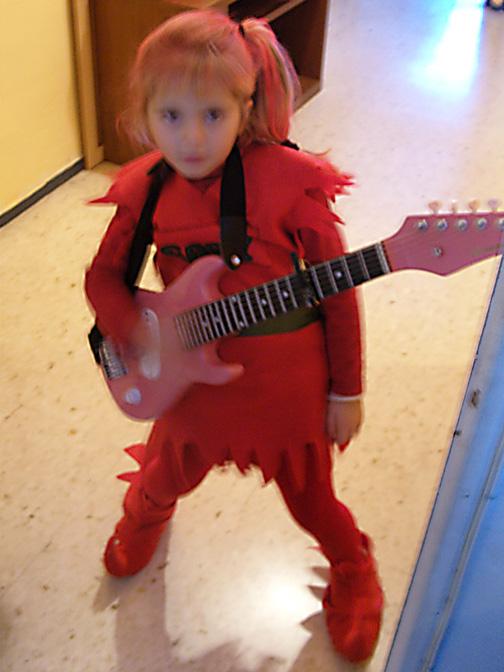
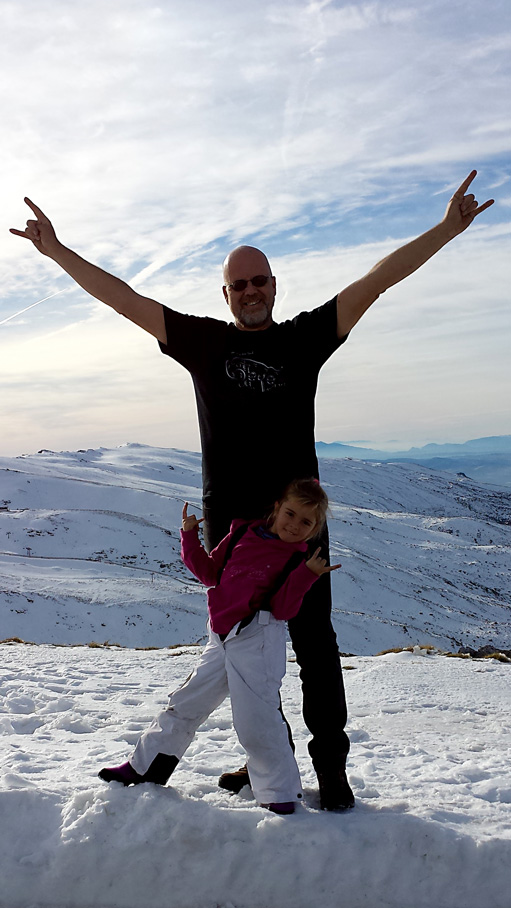

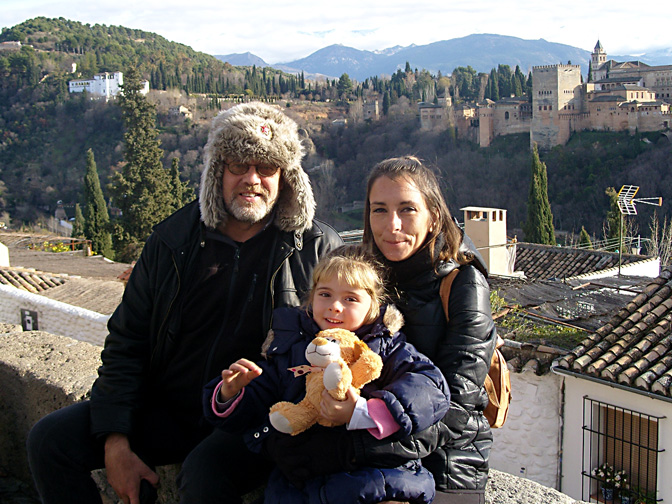
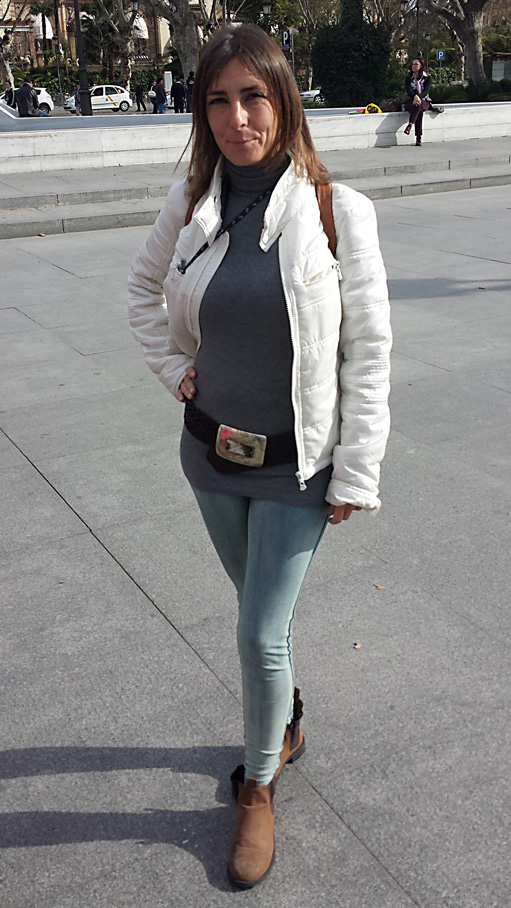
What a life! And had I not flunked out of the Dutch Conservatory of Music, I might have become a classical guitar teacher…
Copyright © 2017 the Gypsy Guitar Corporation, All Rights Reserved.